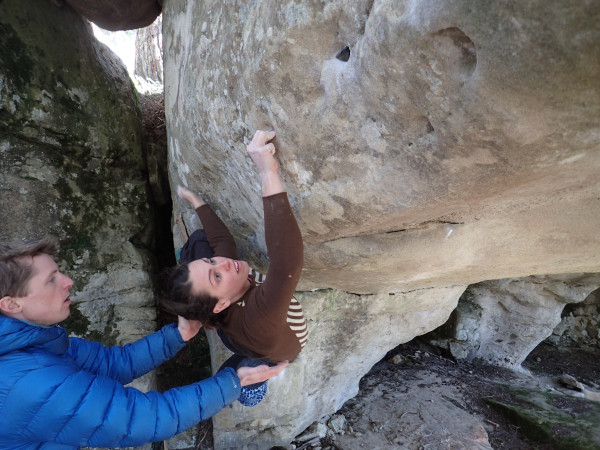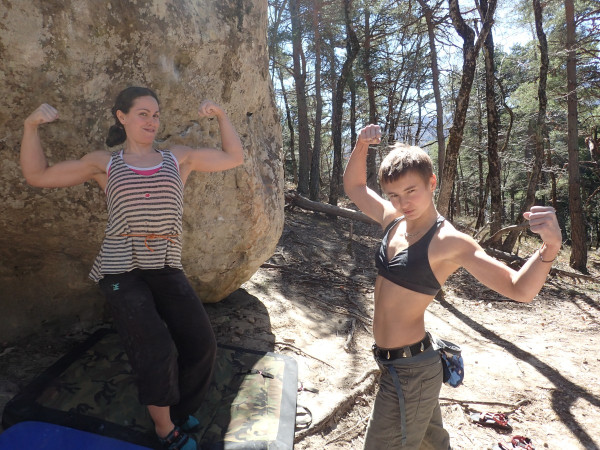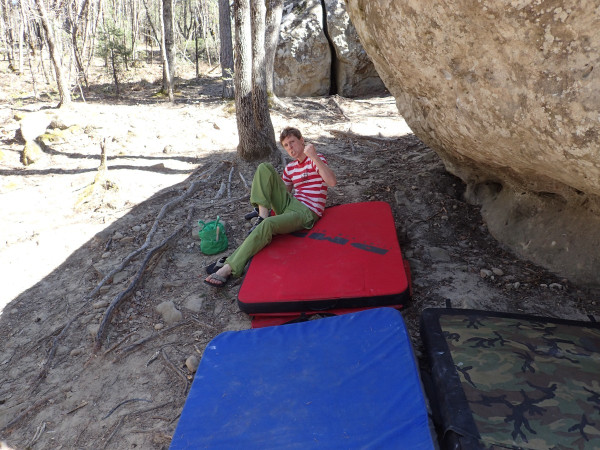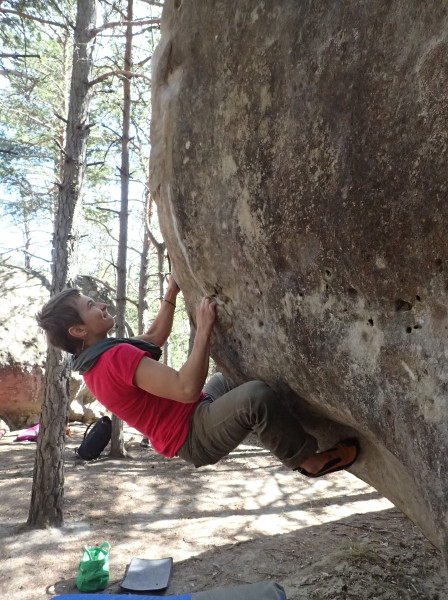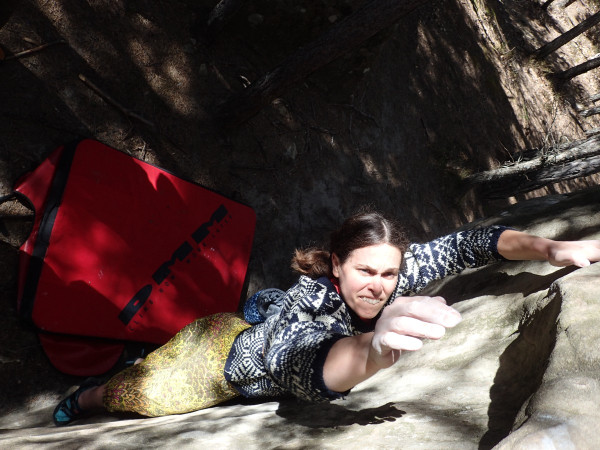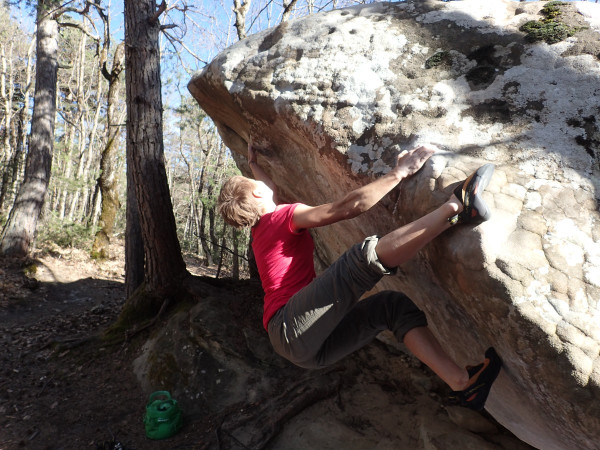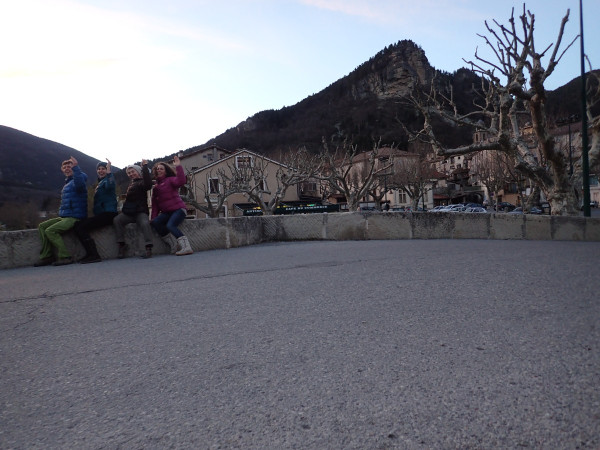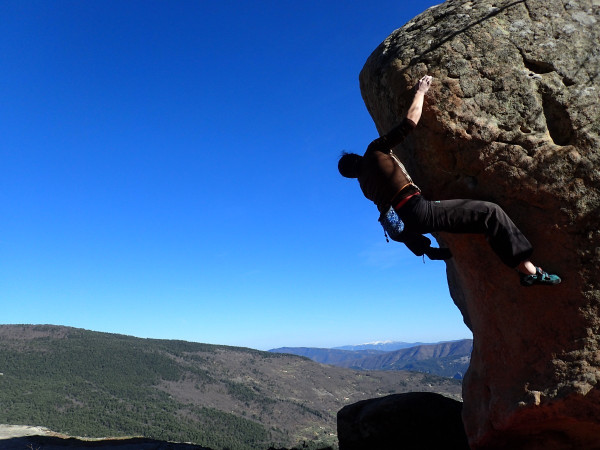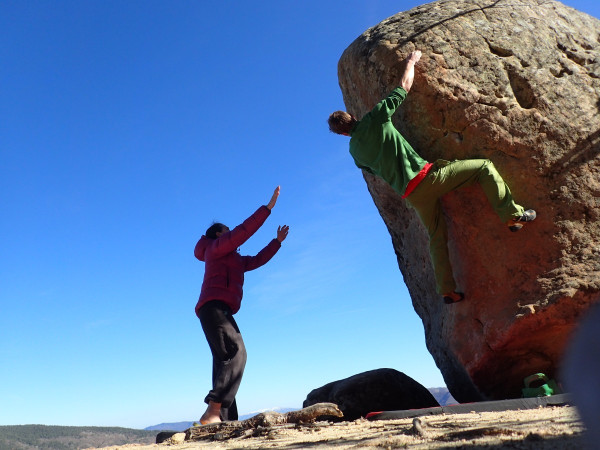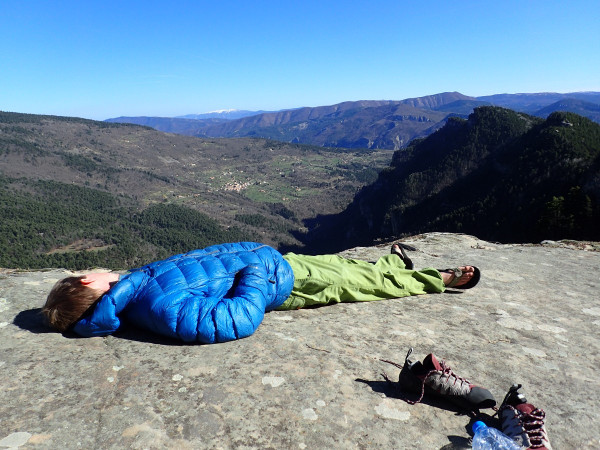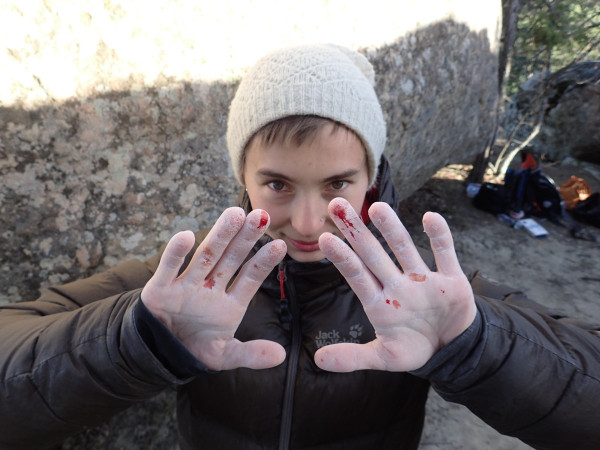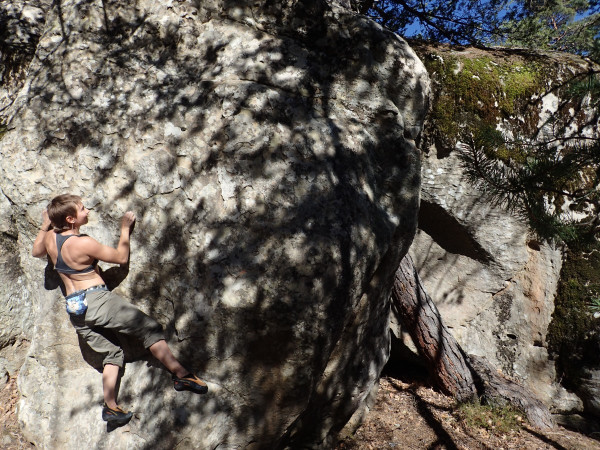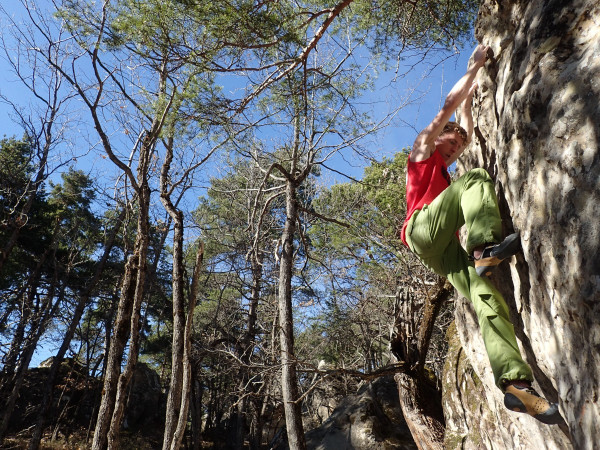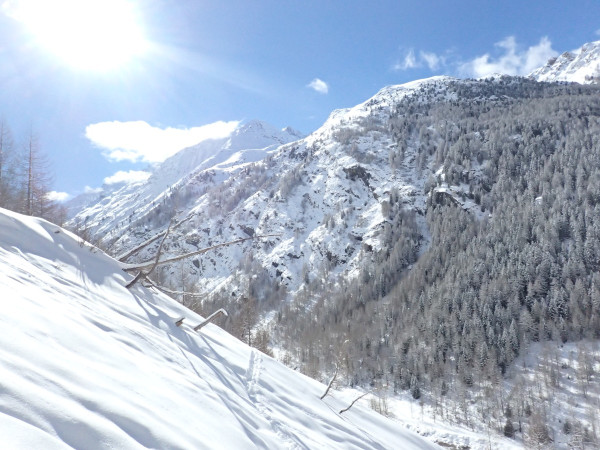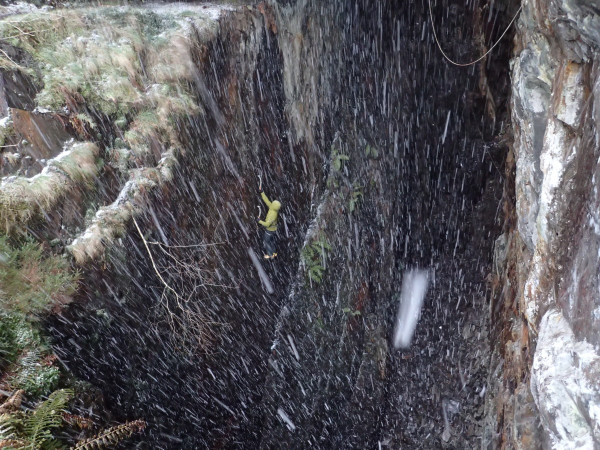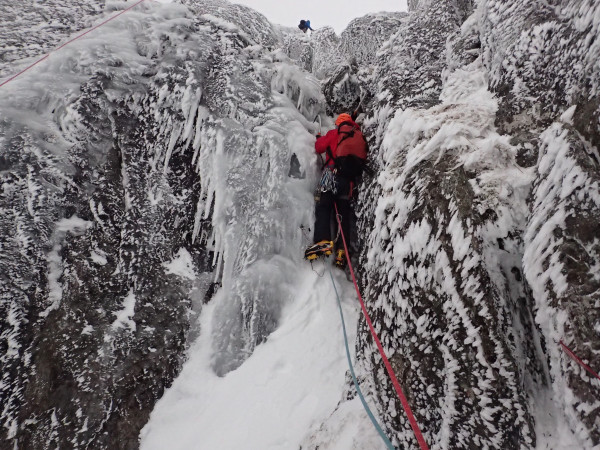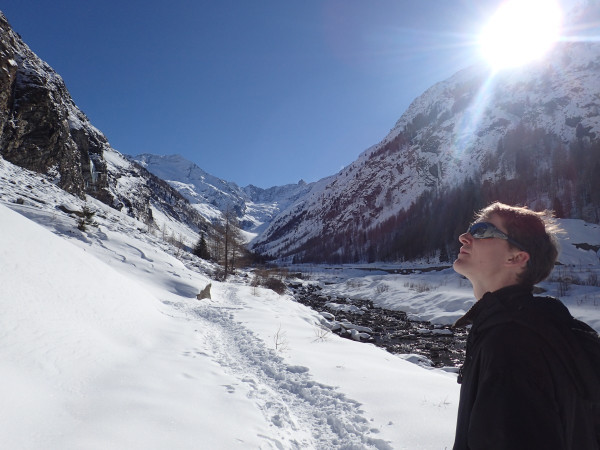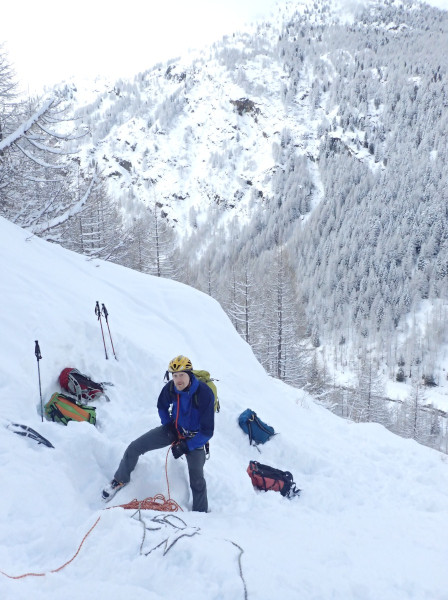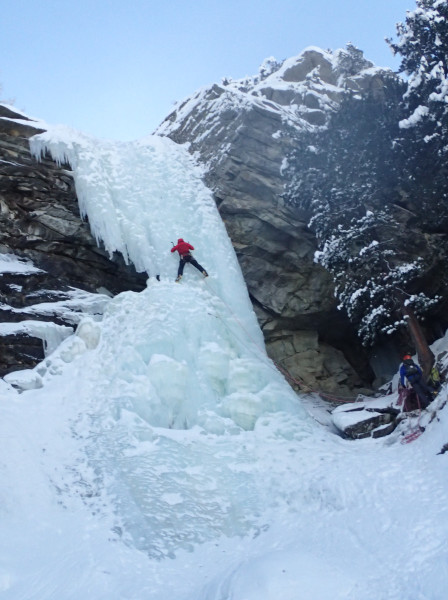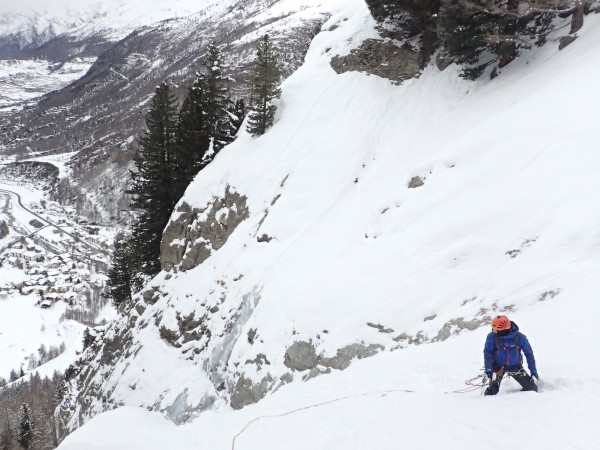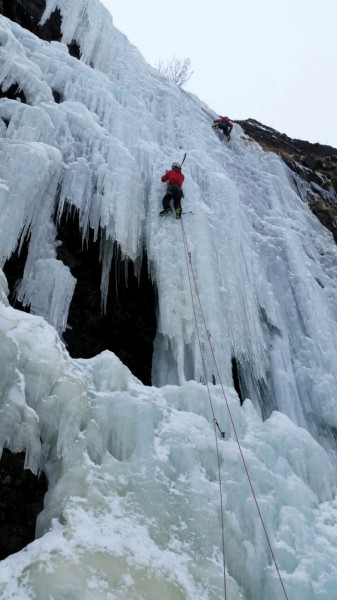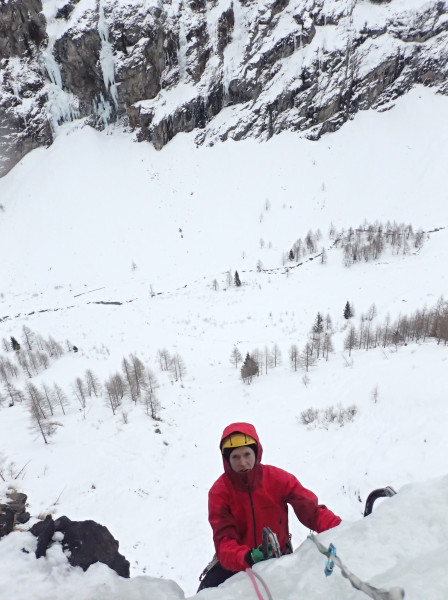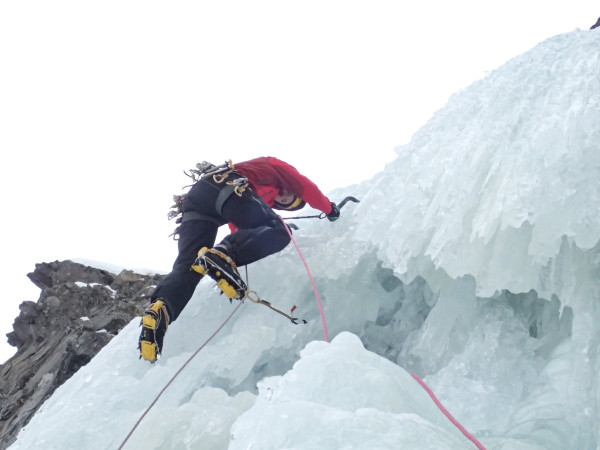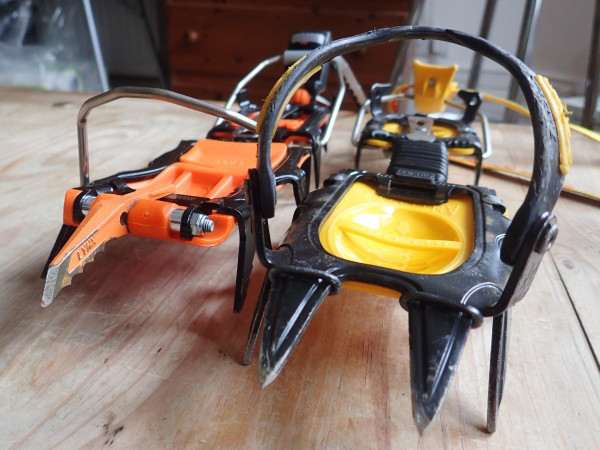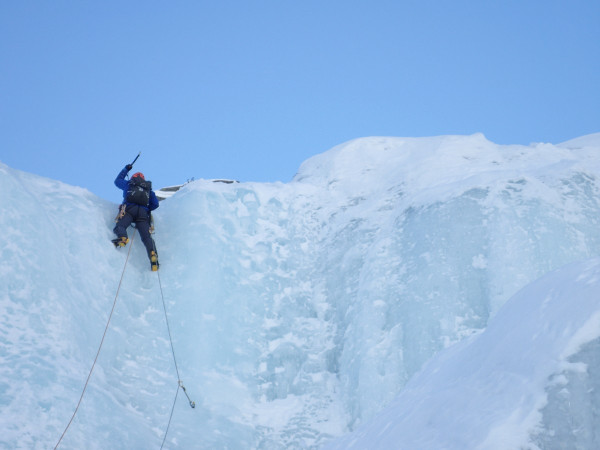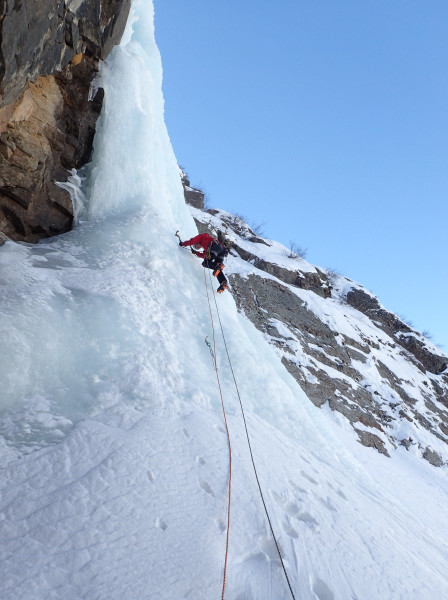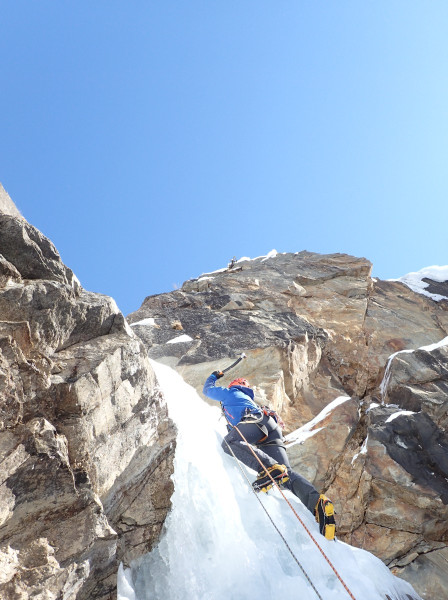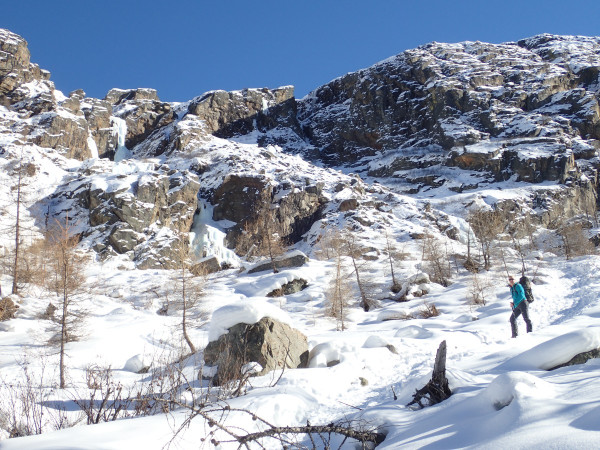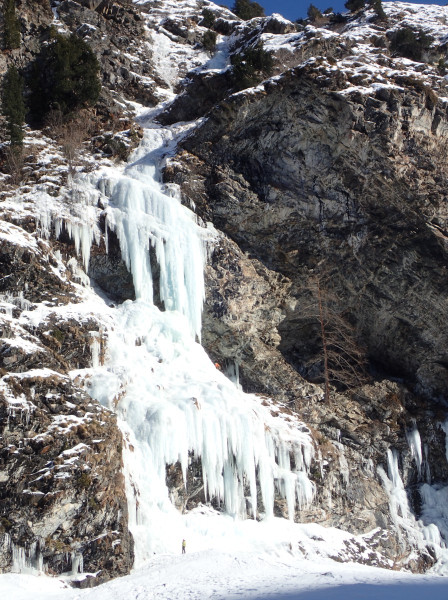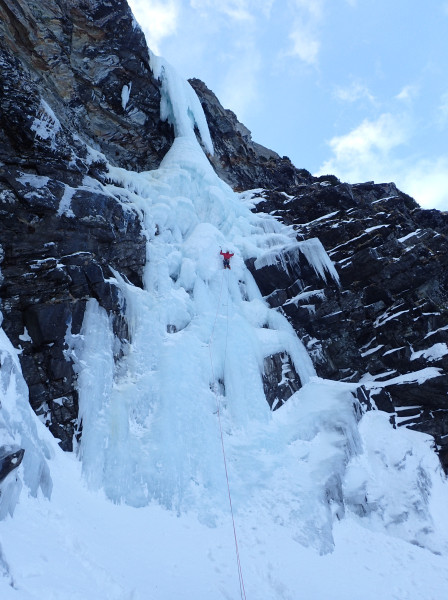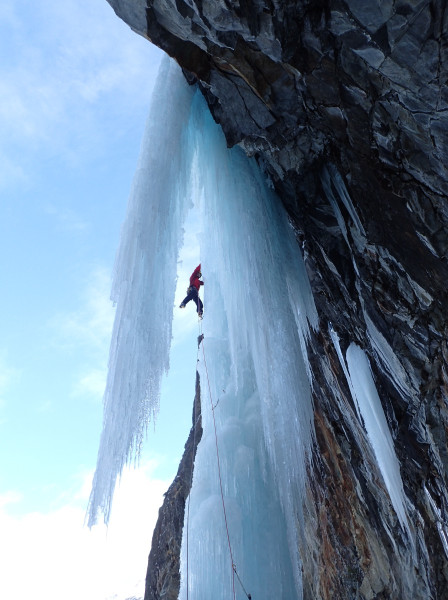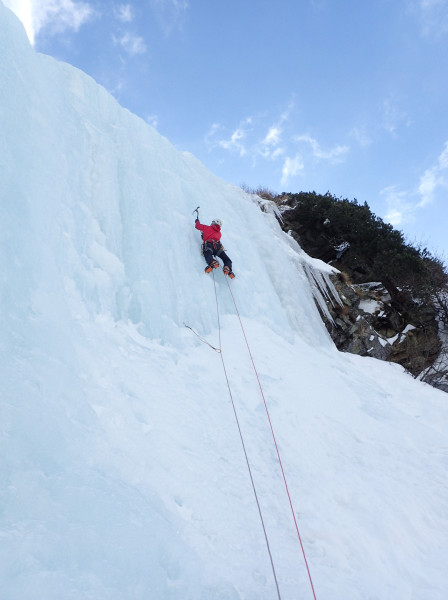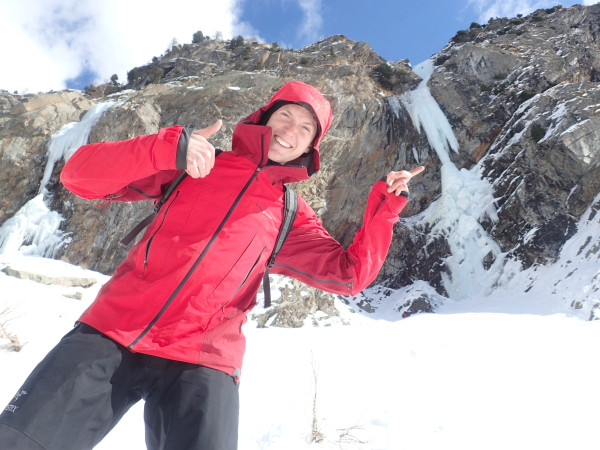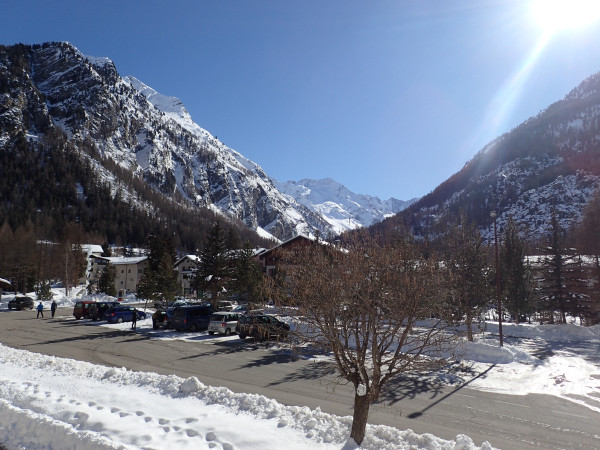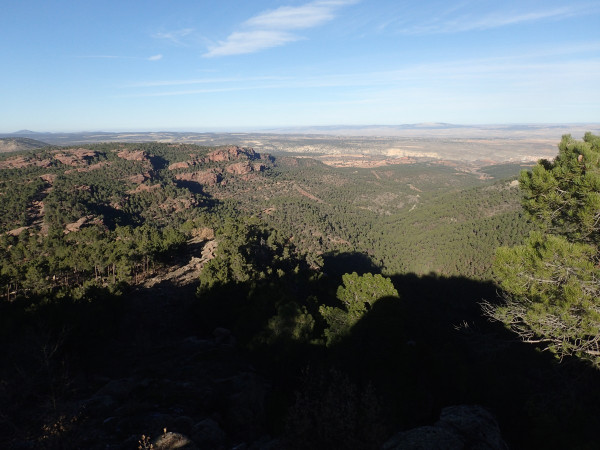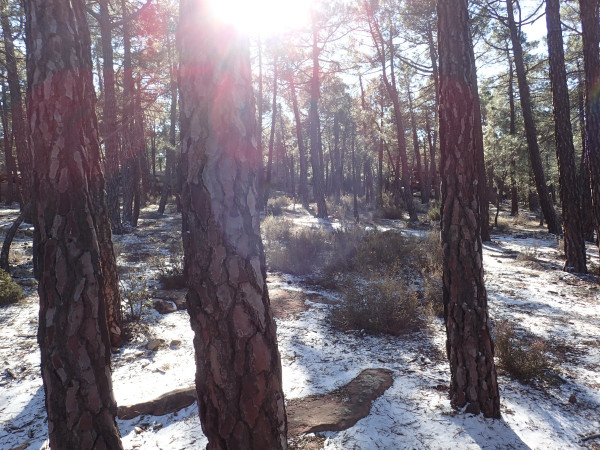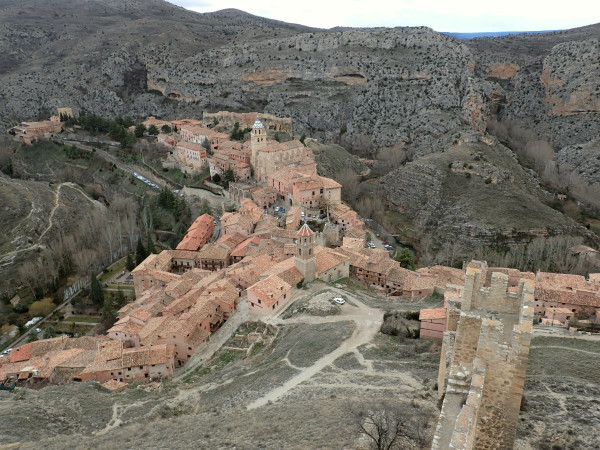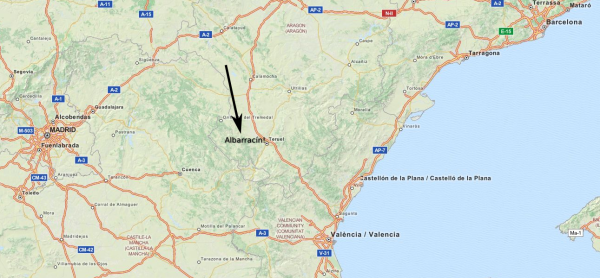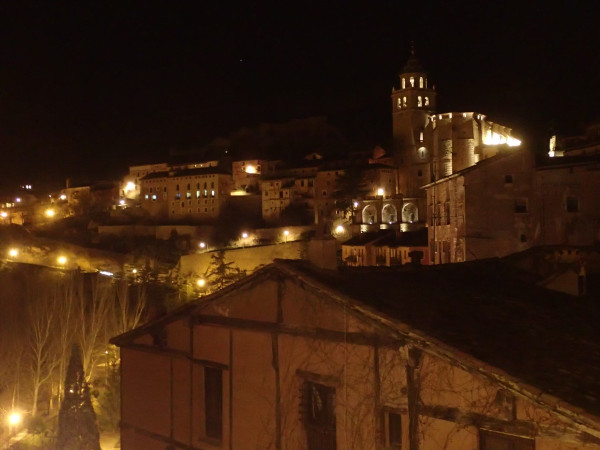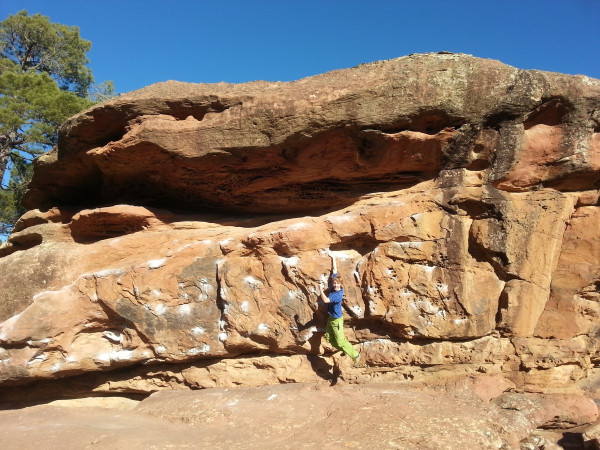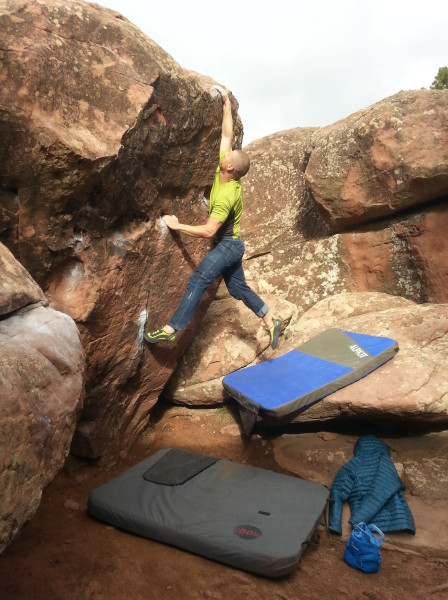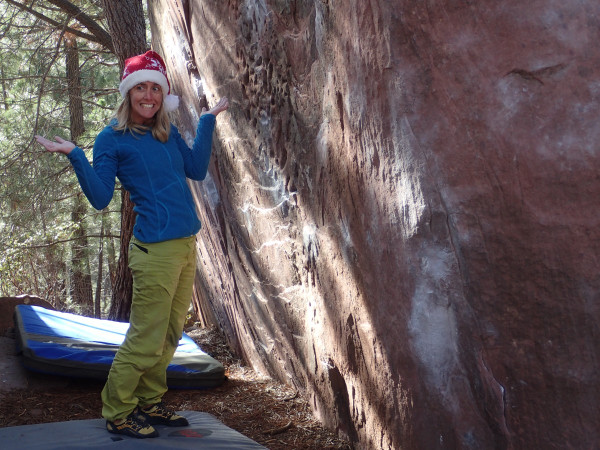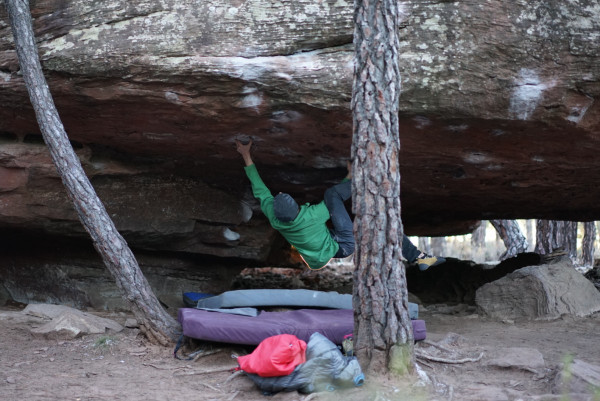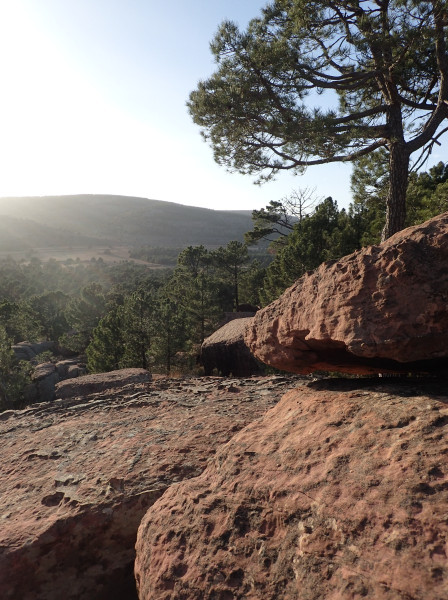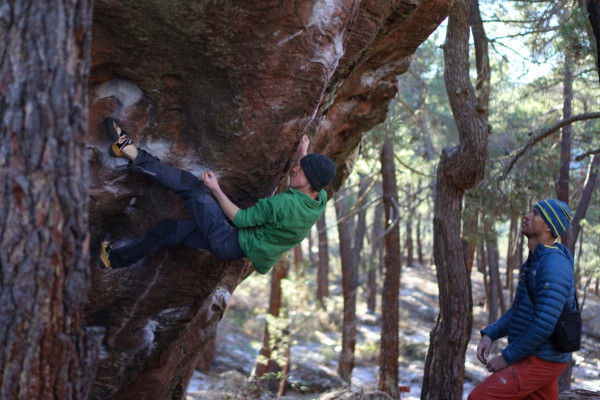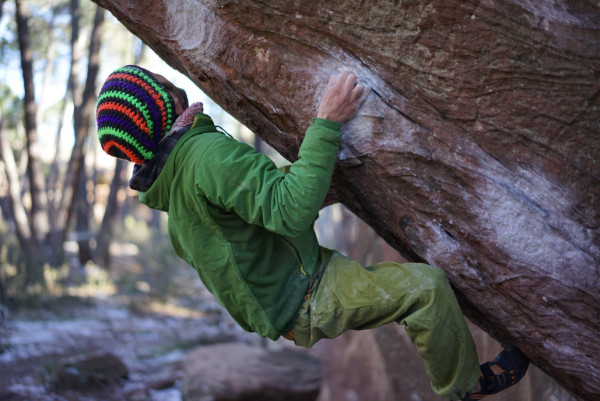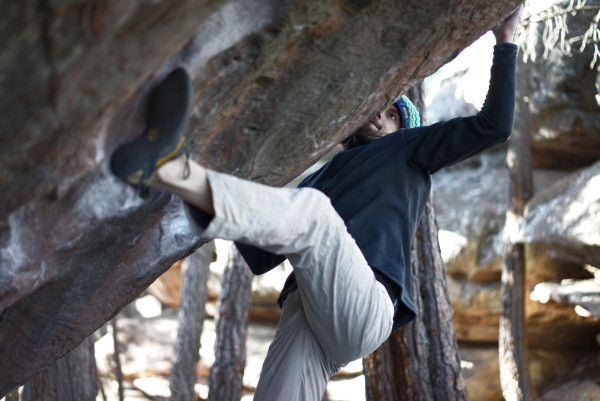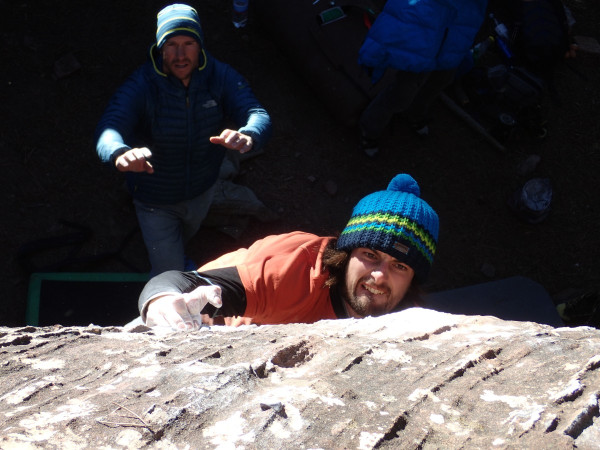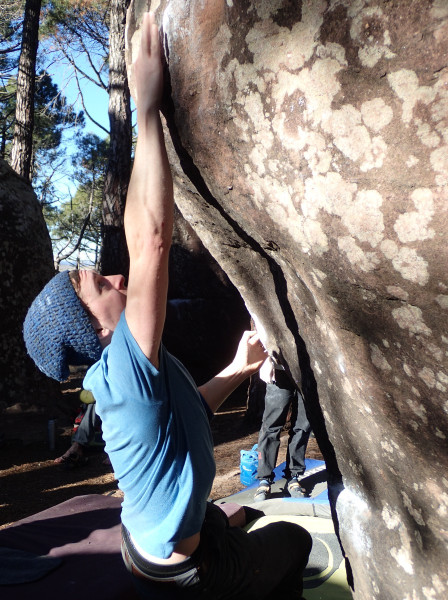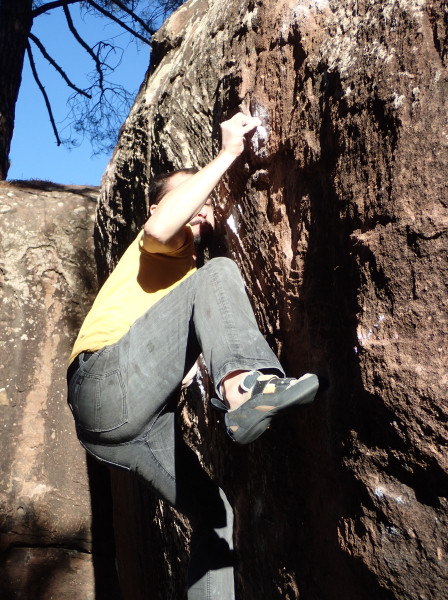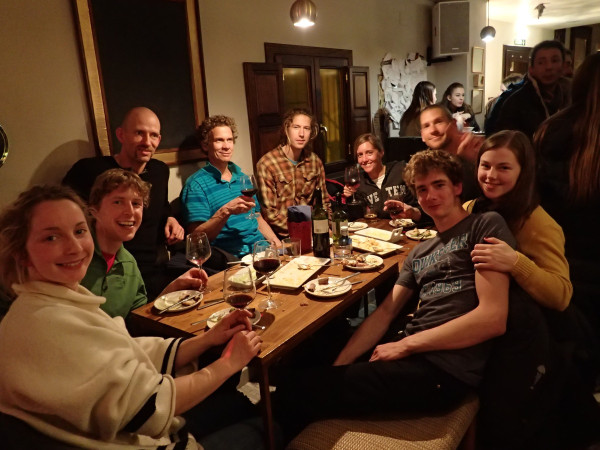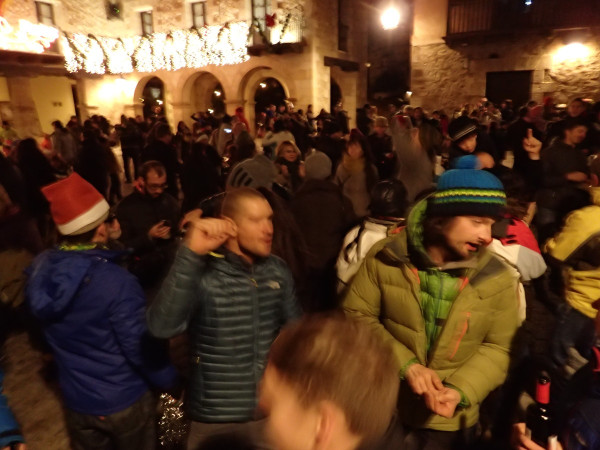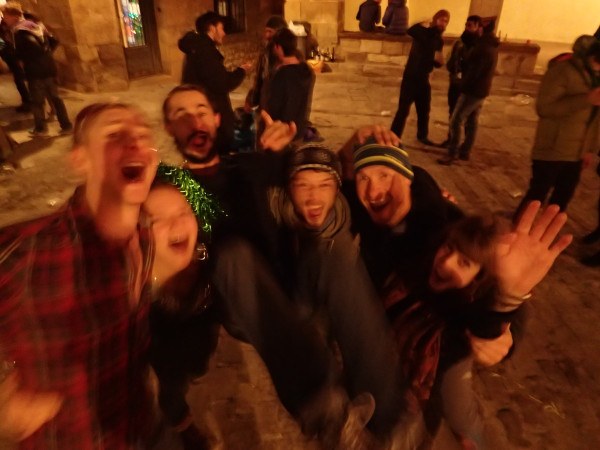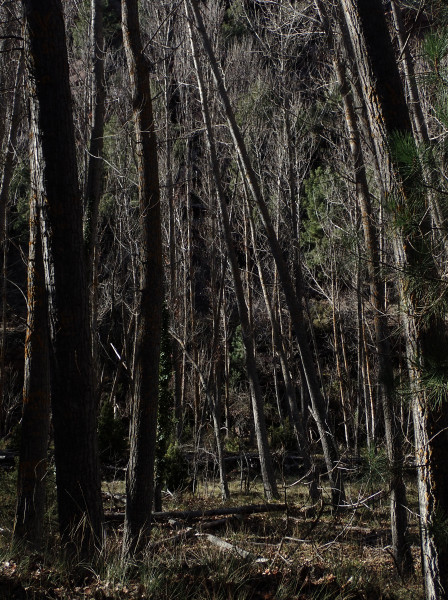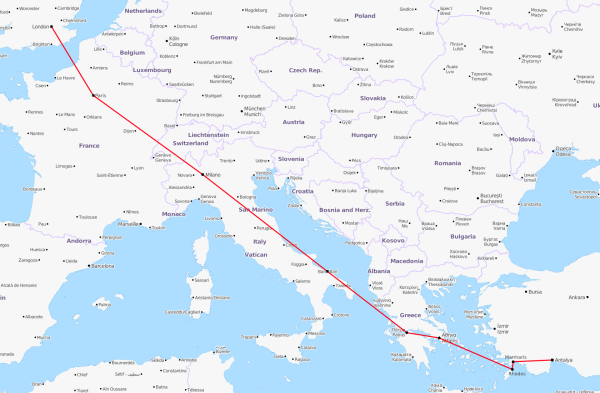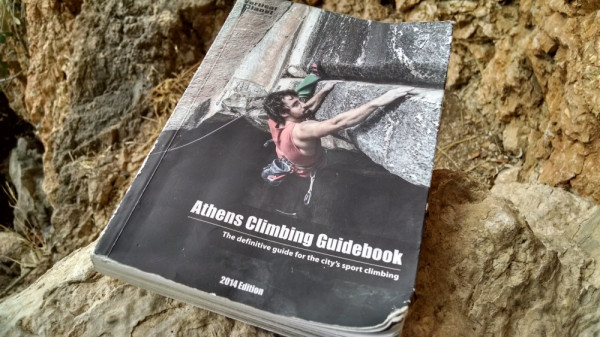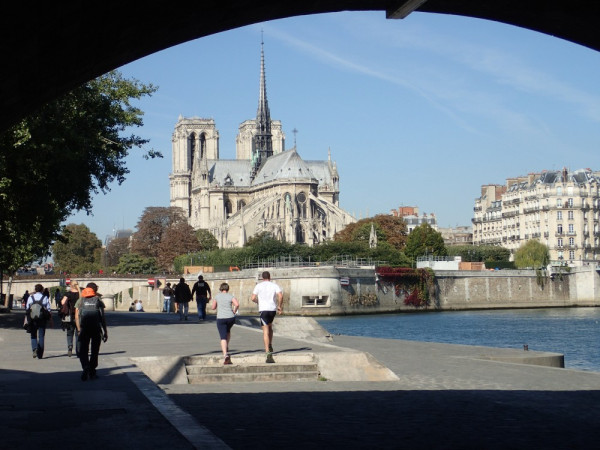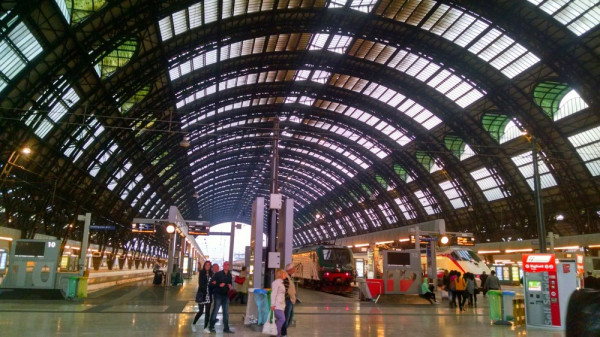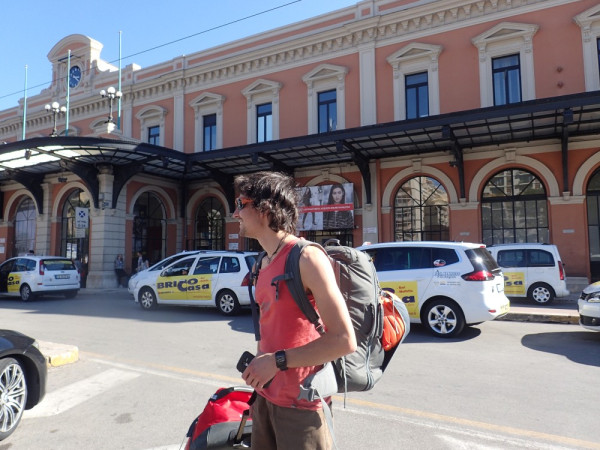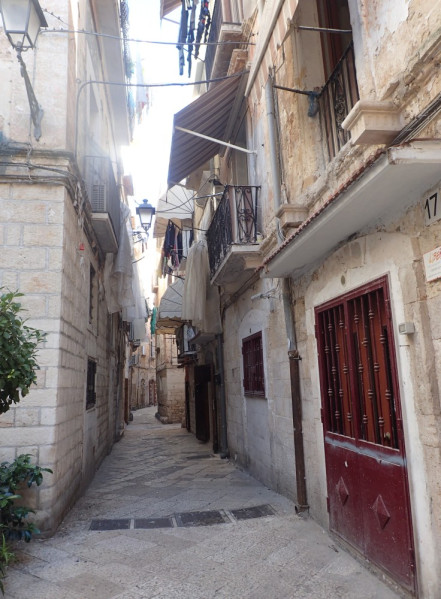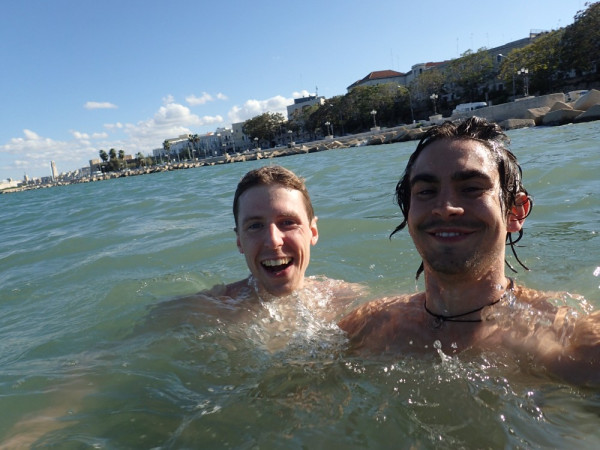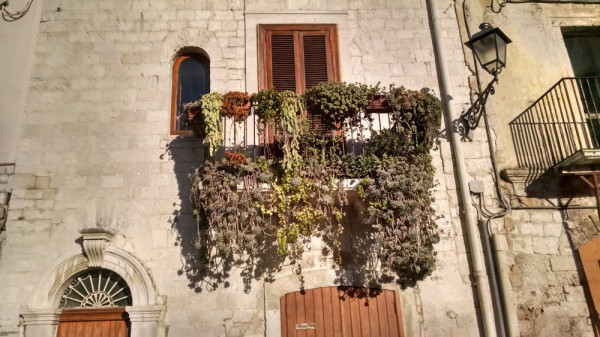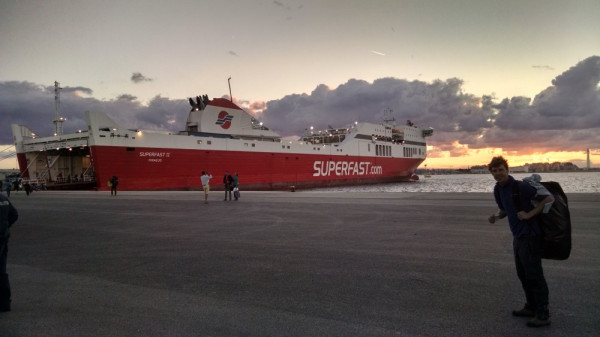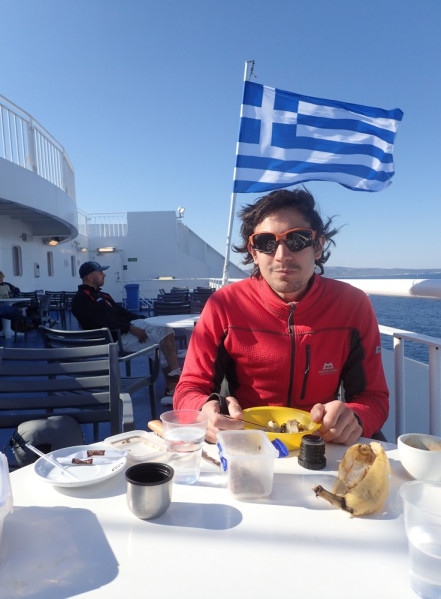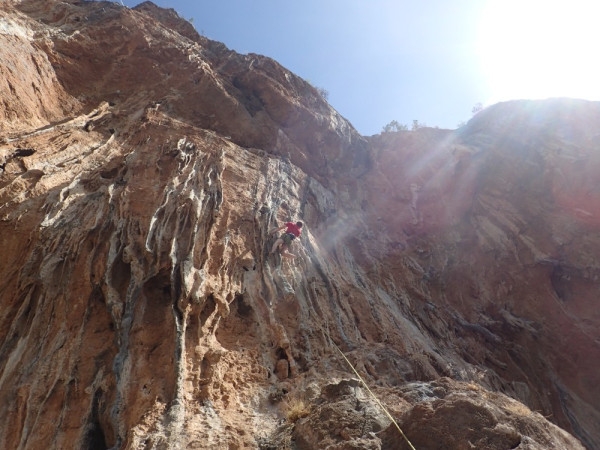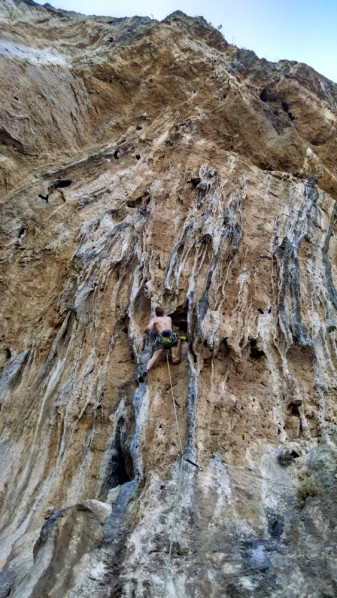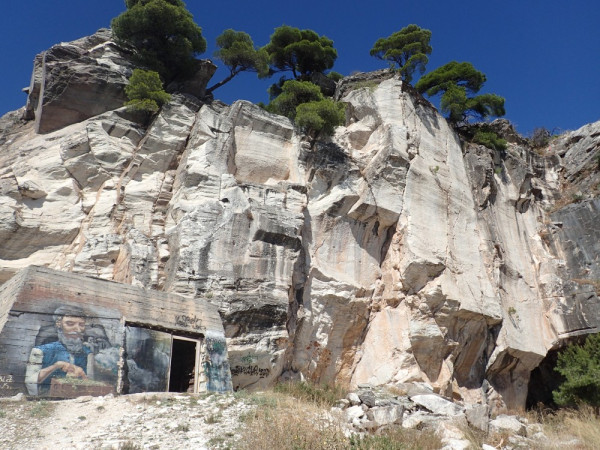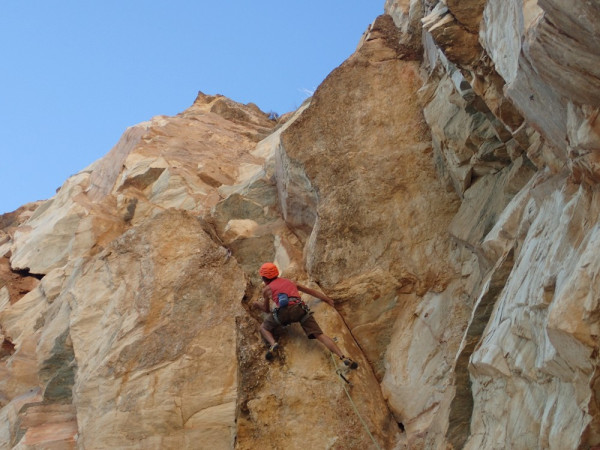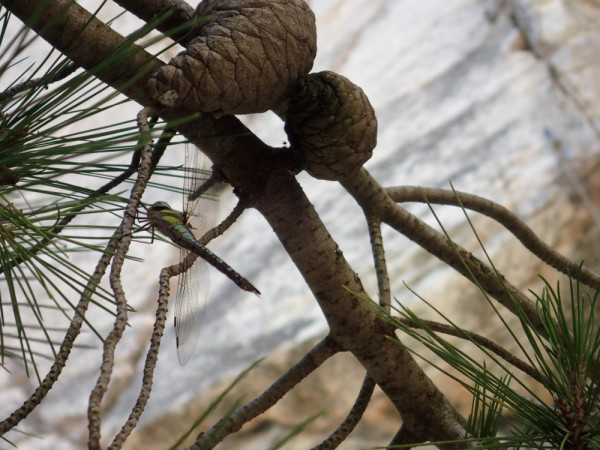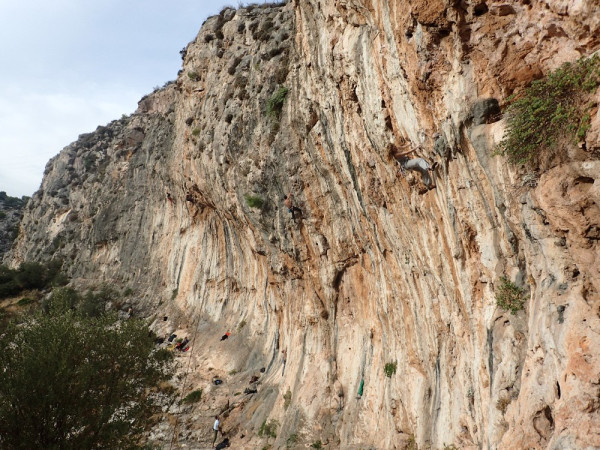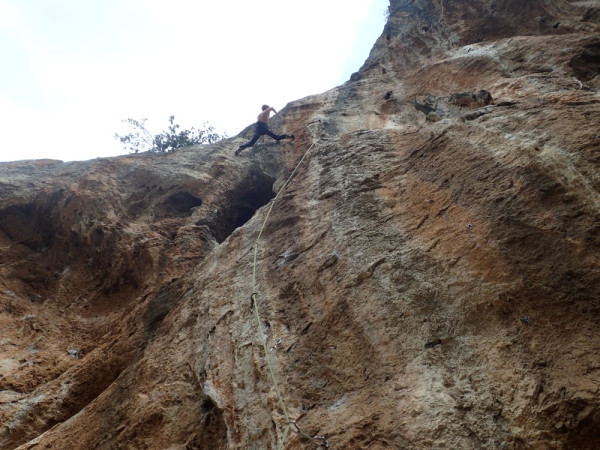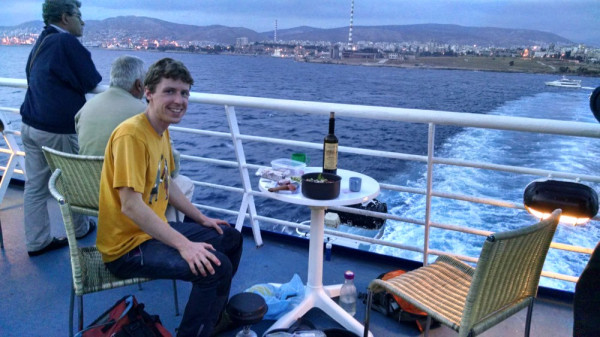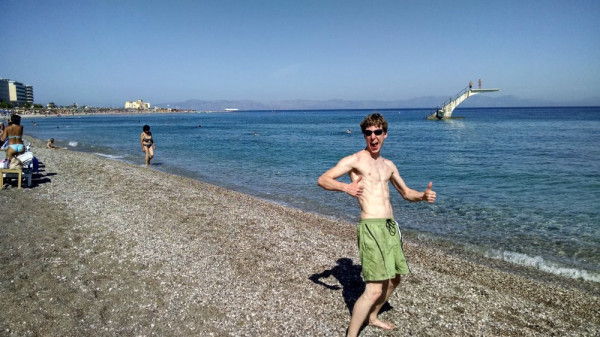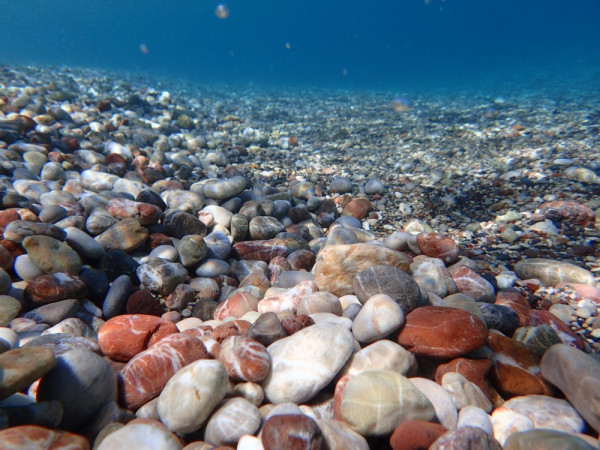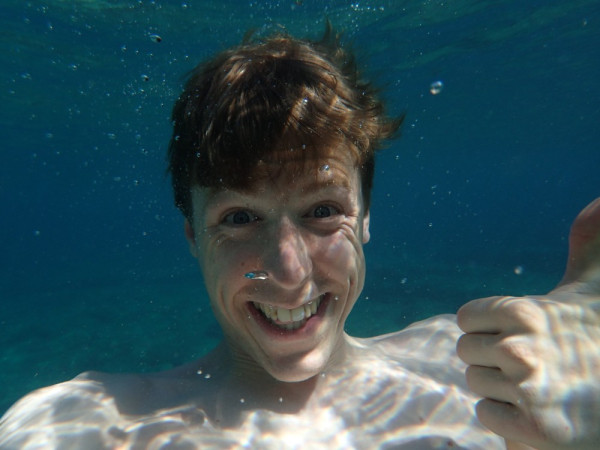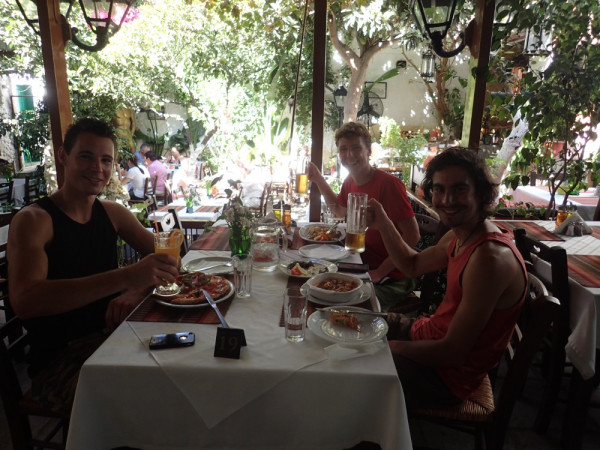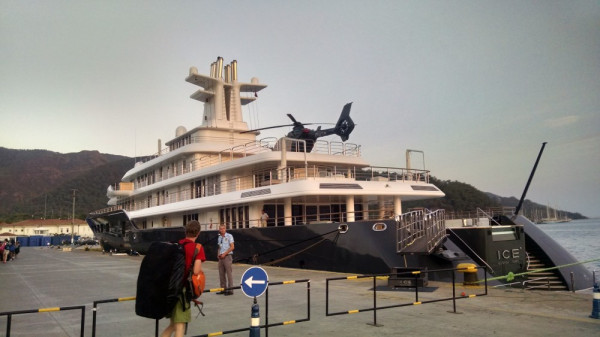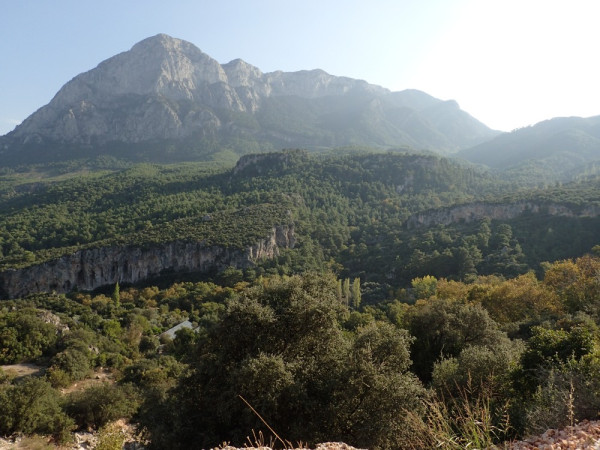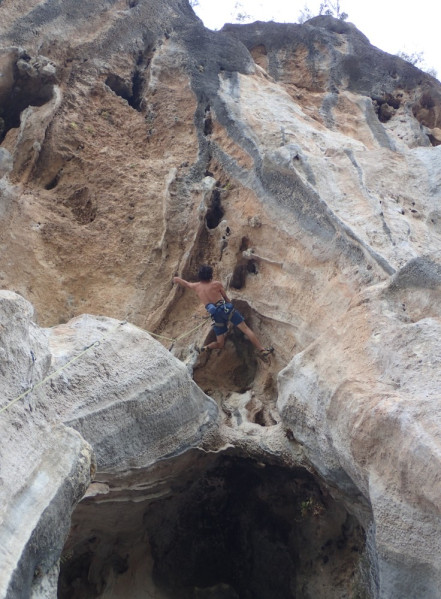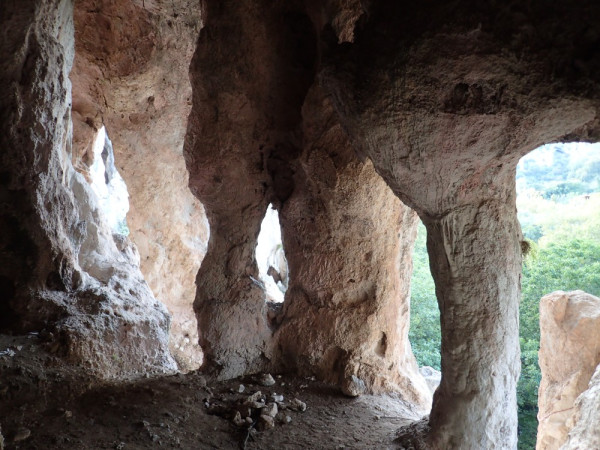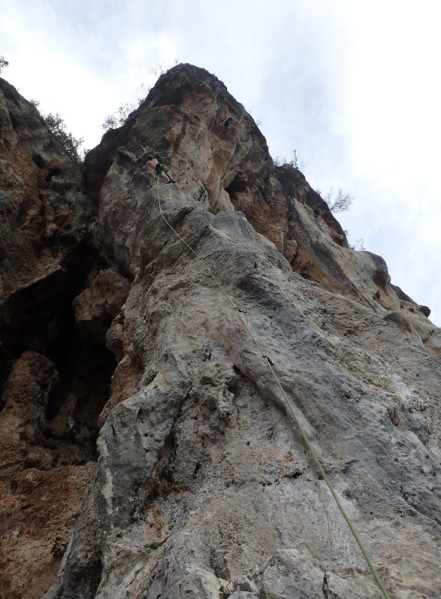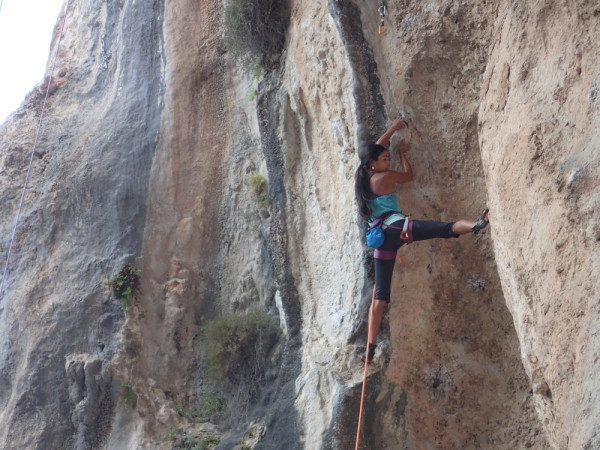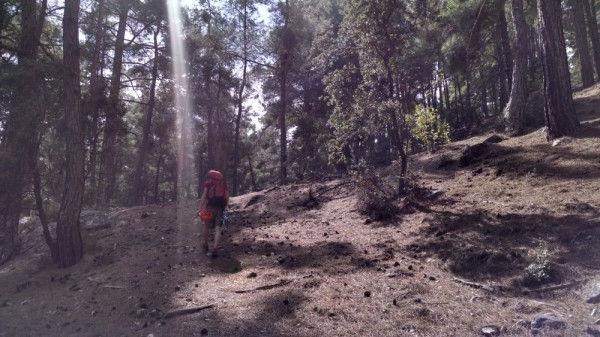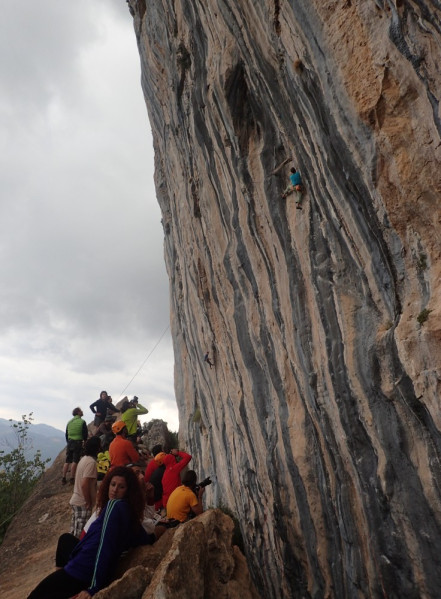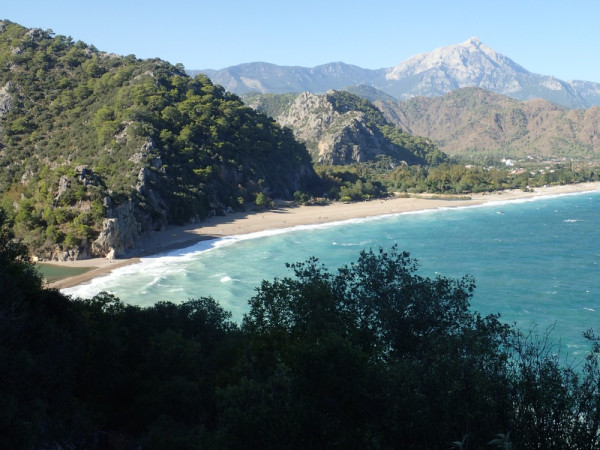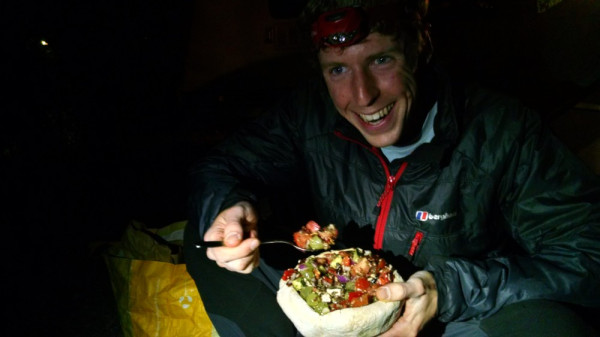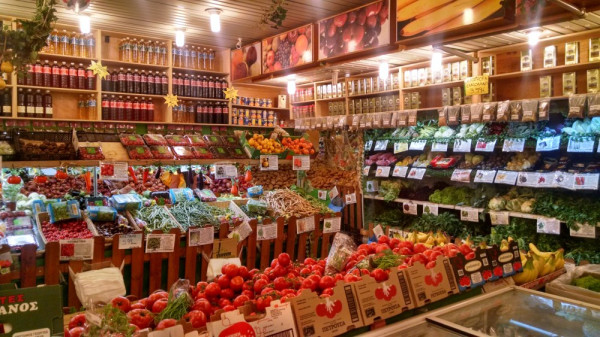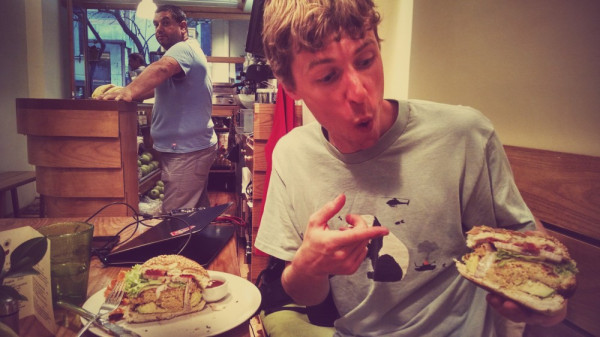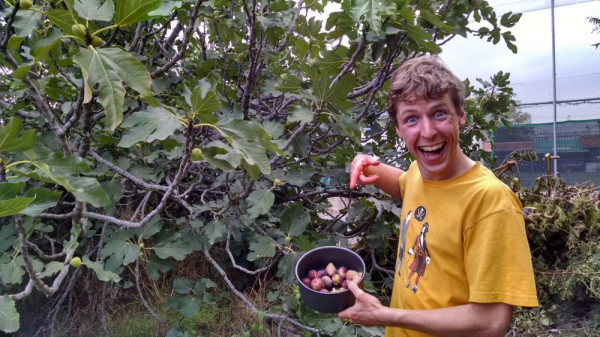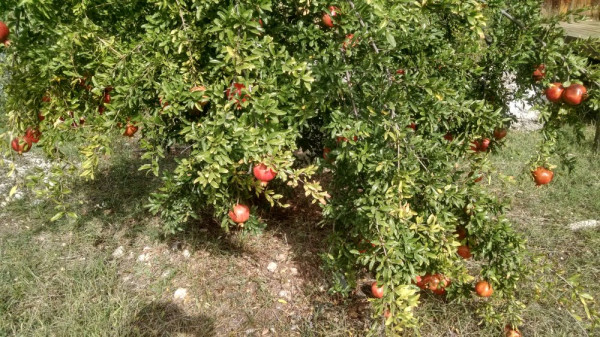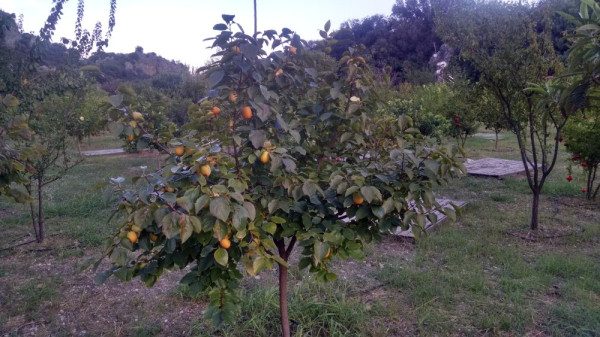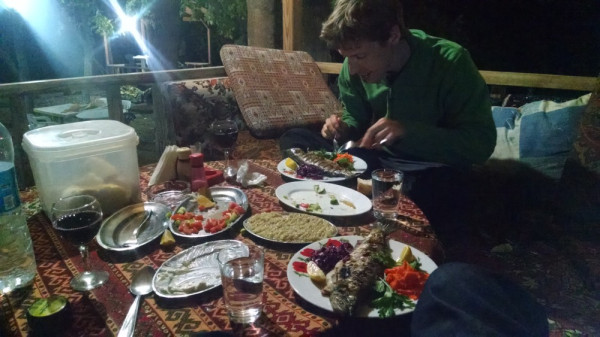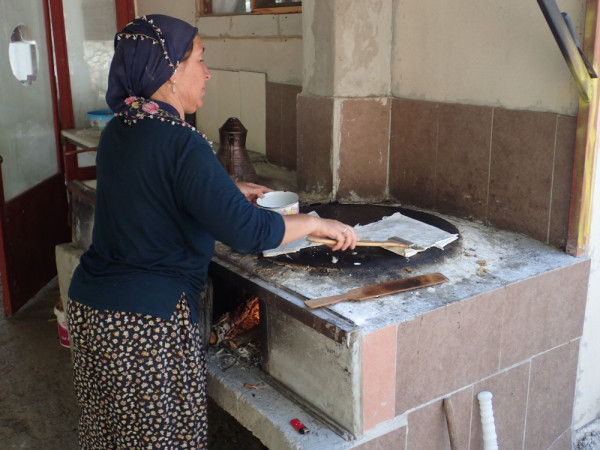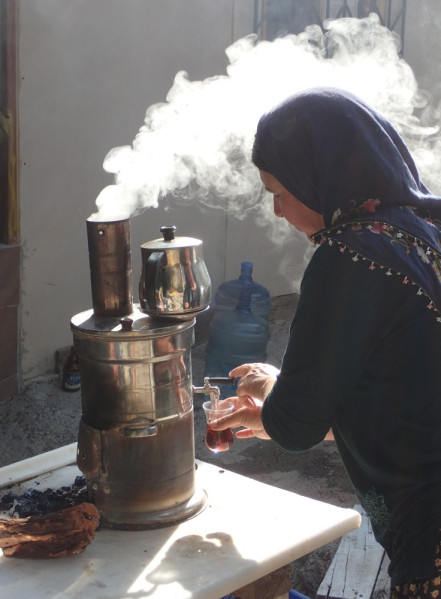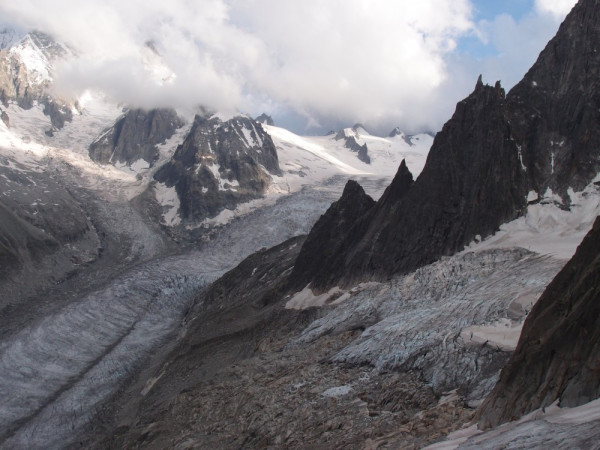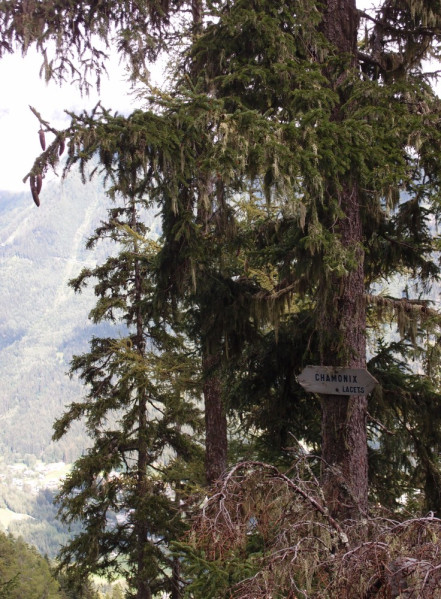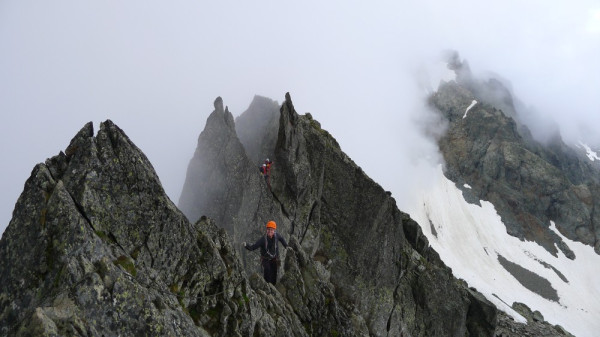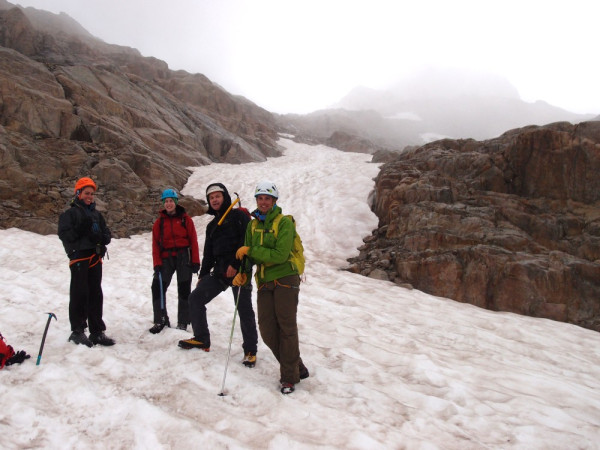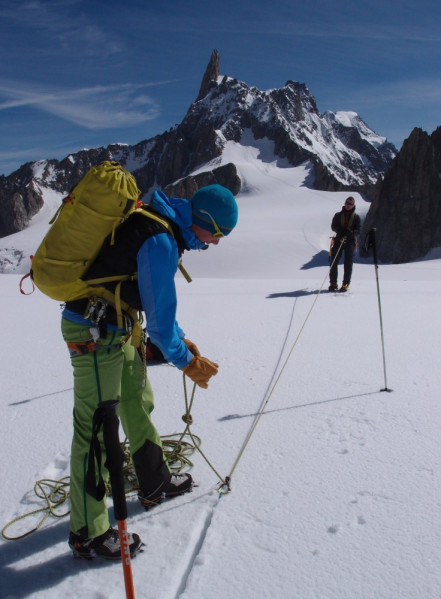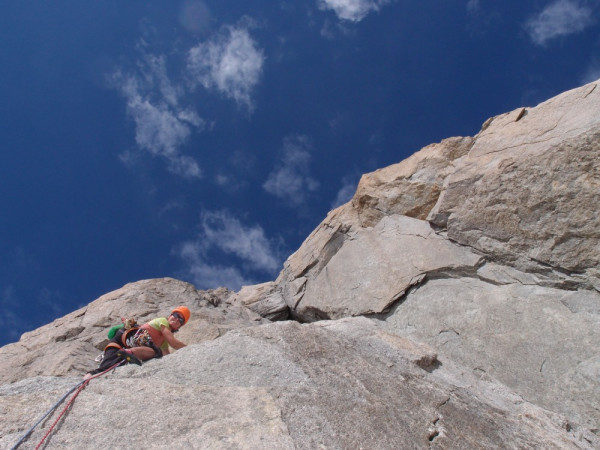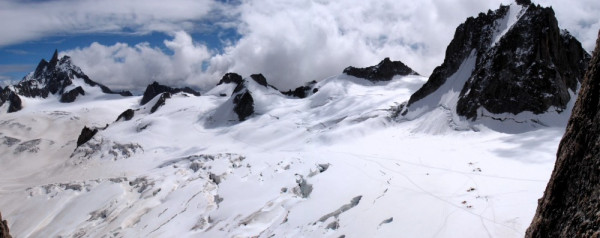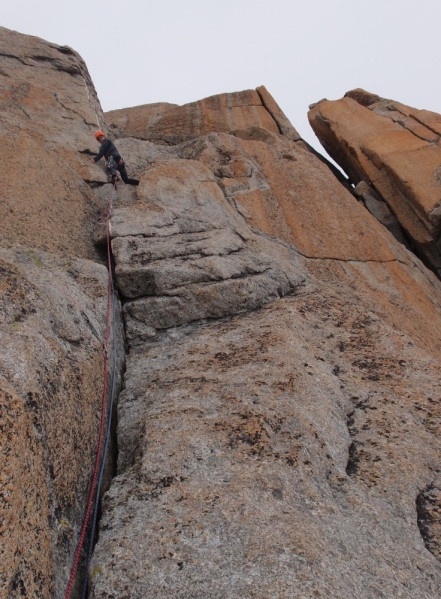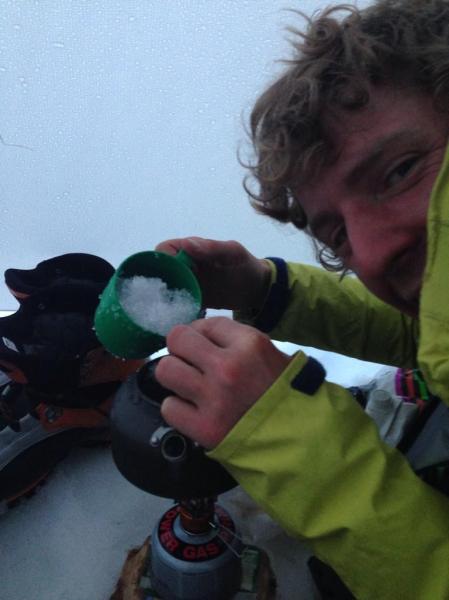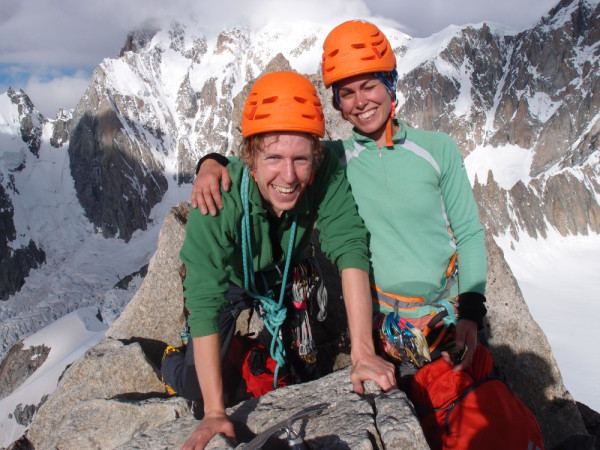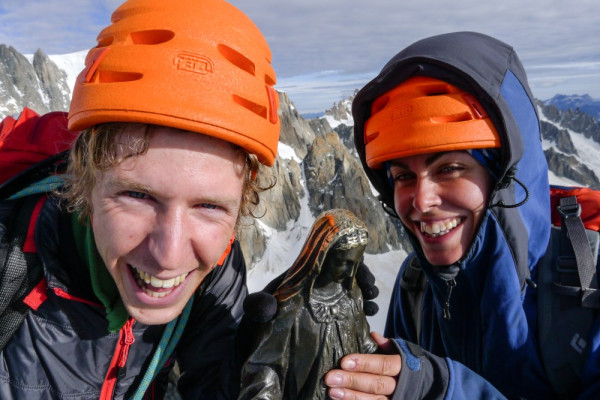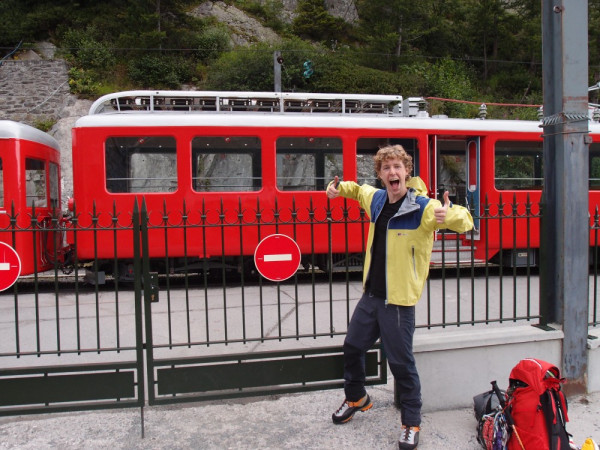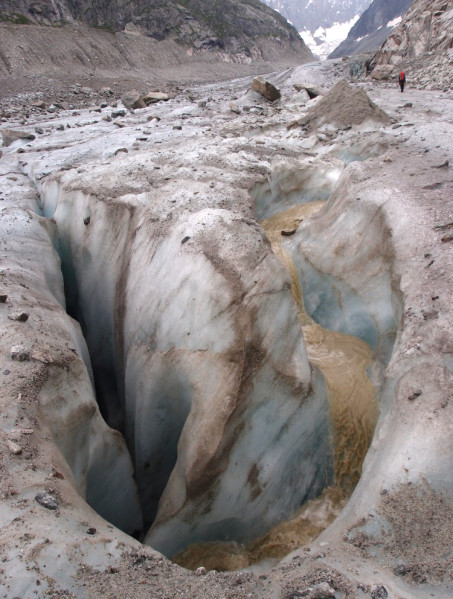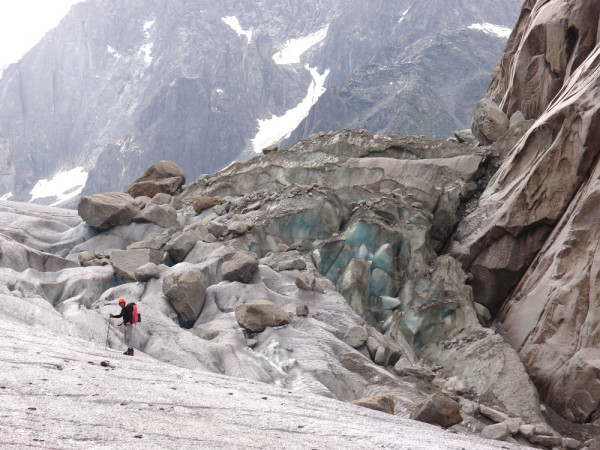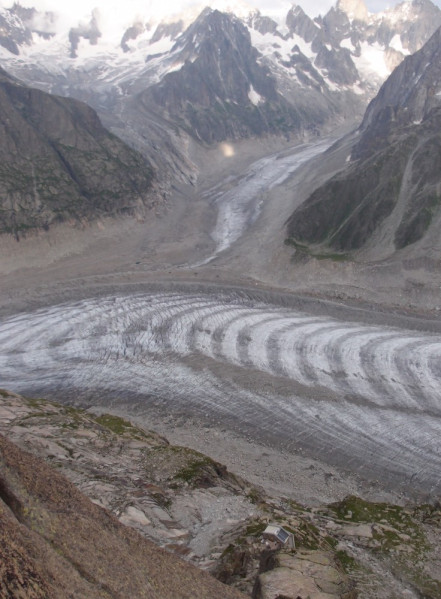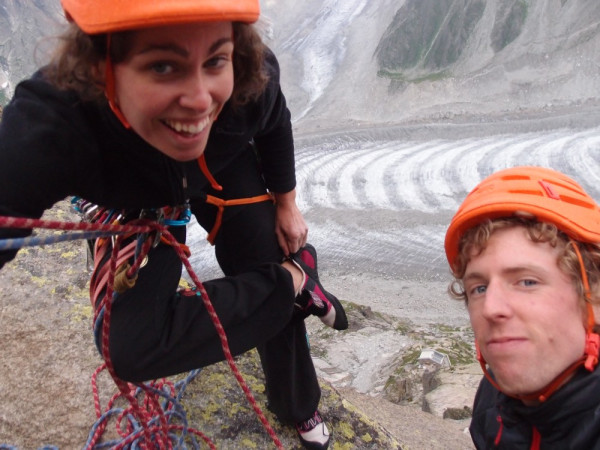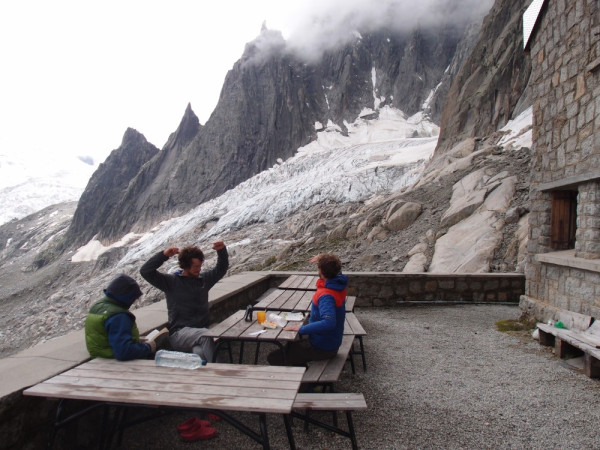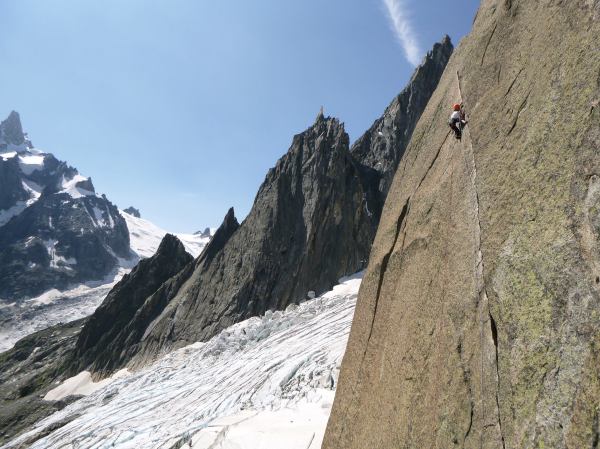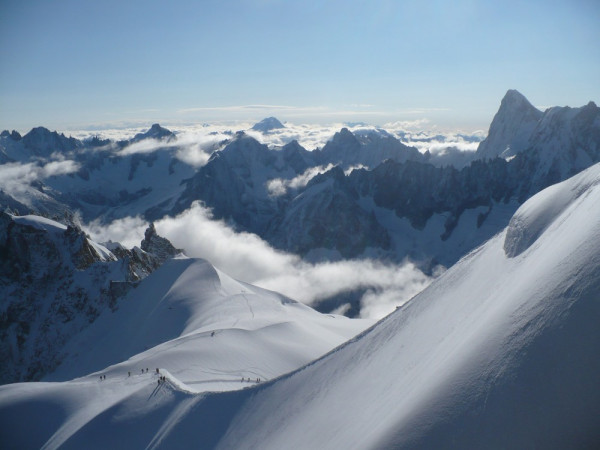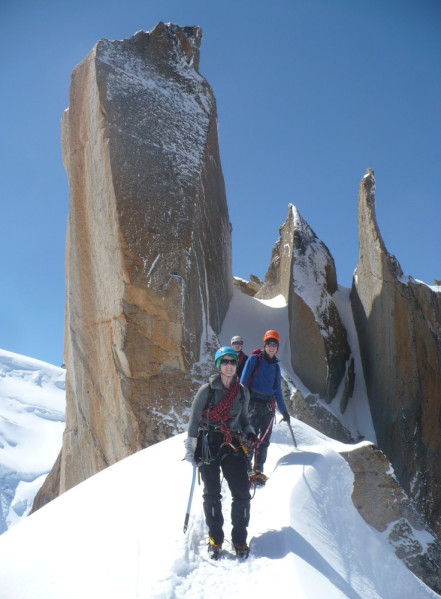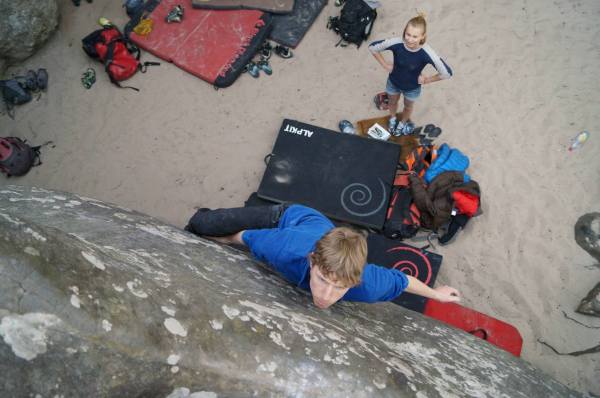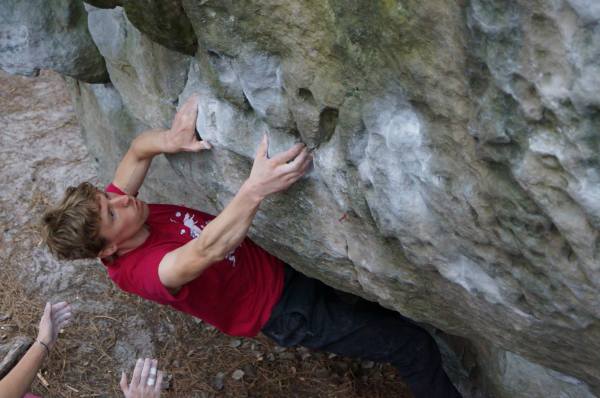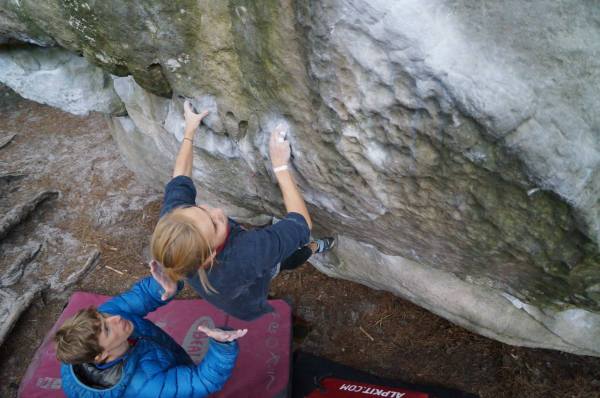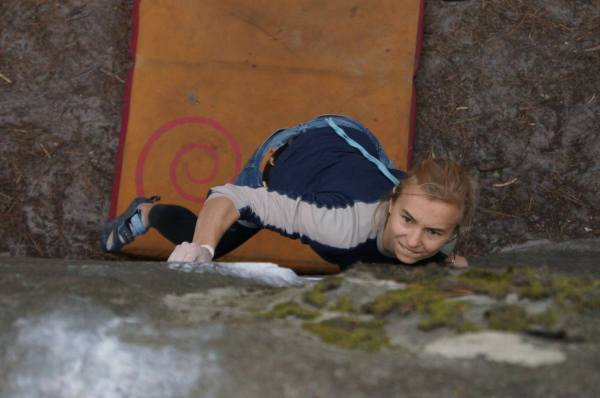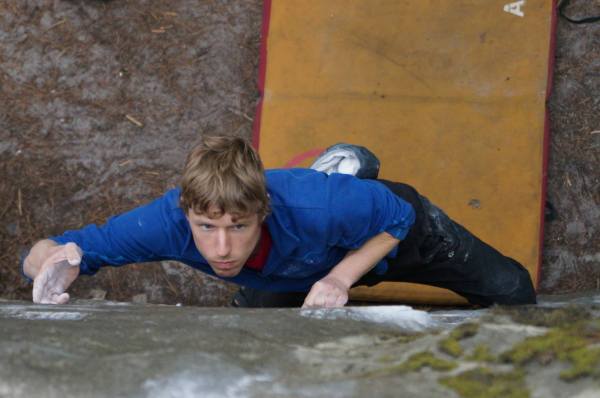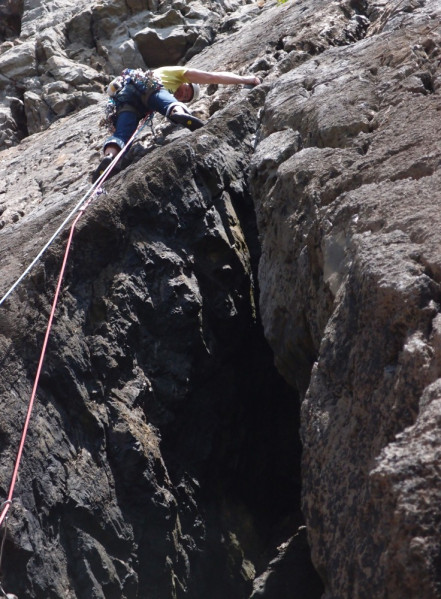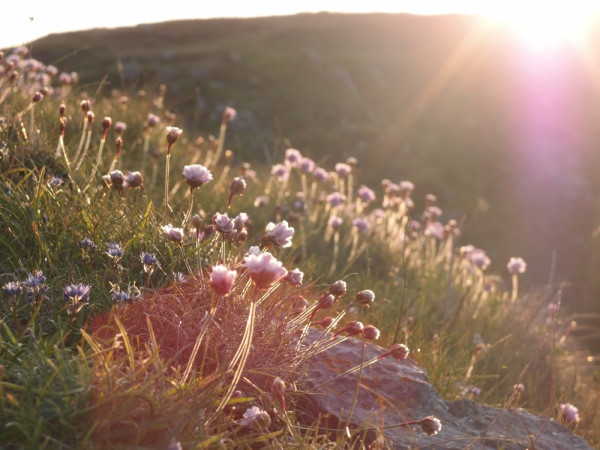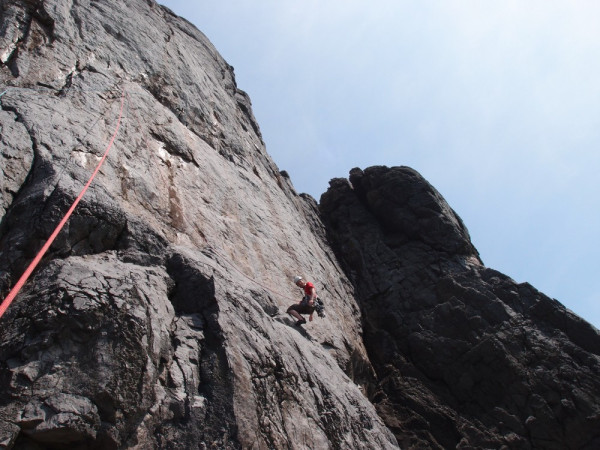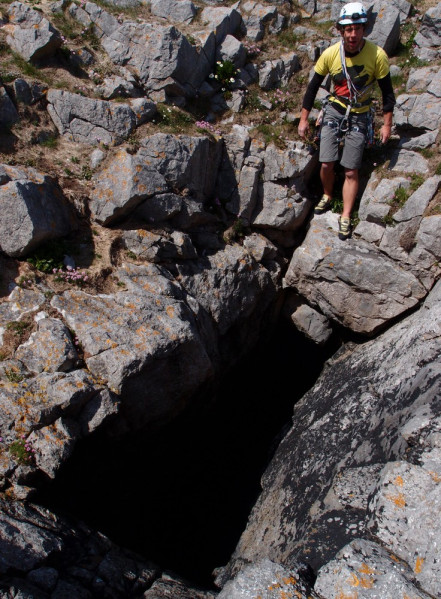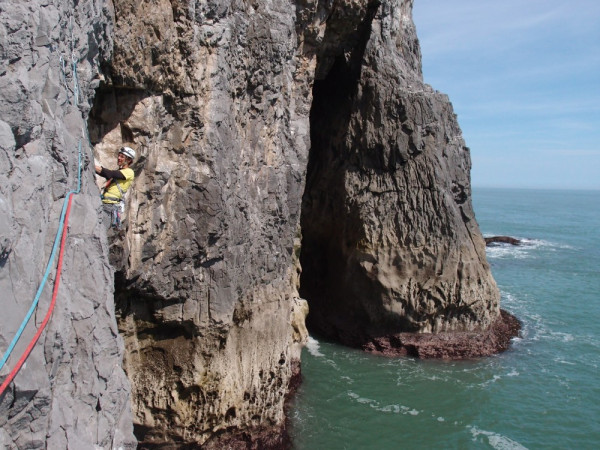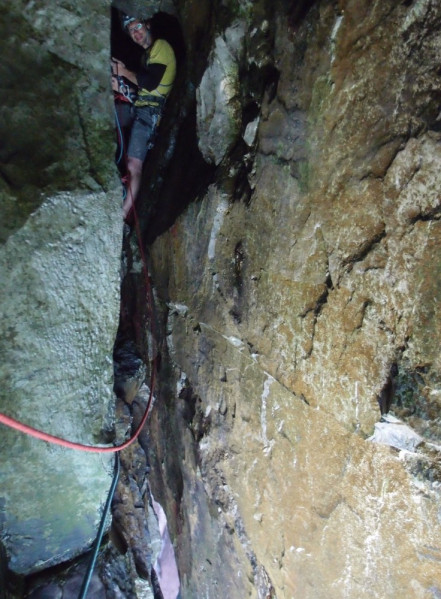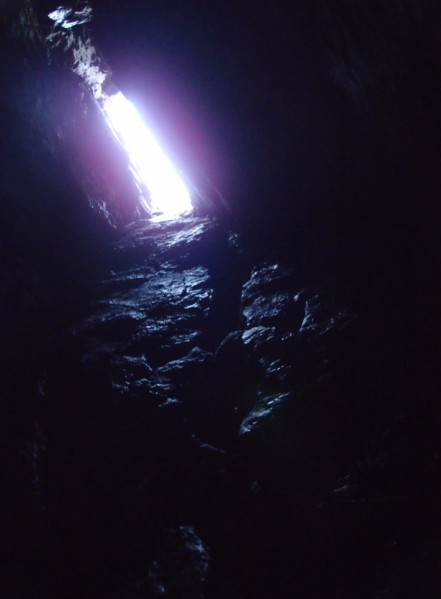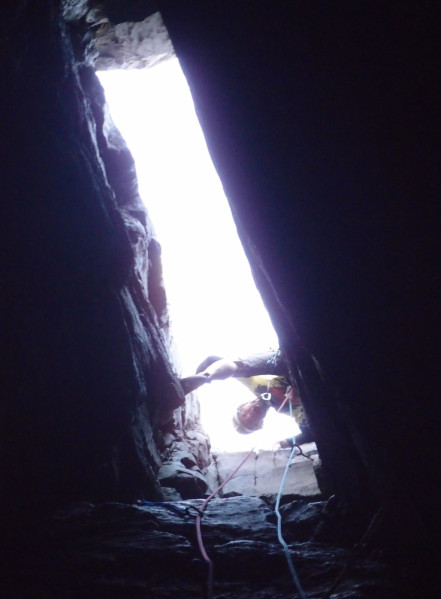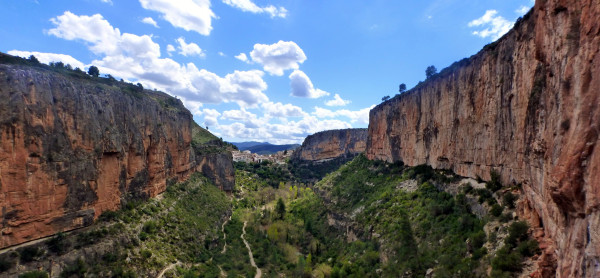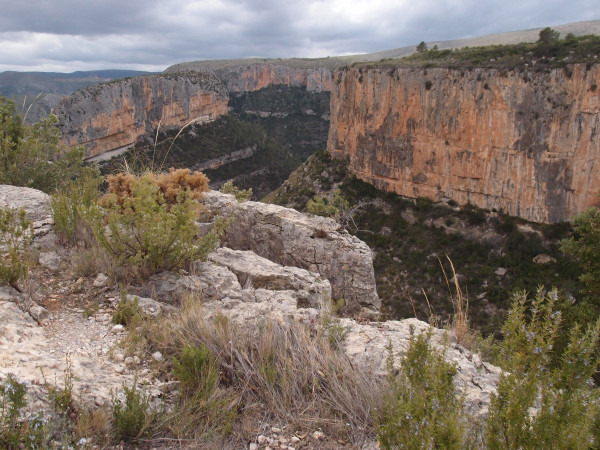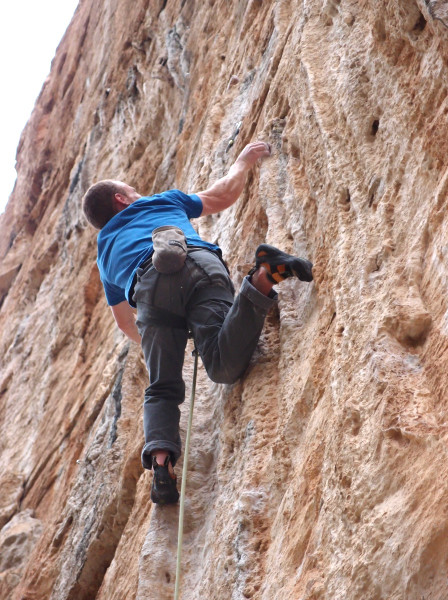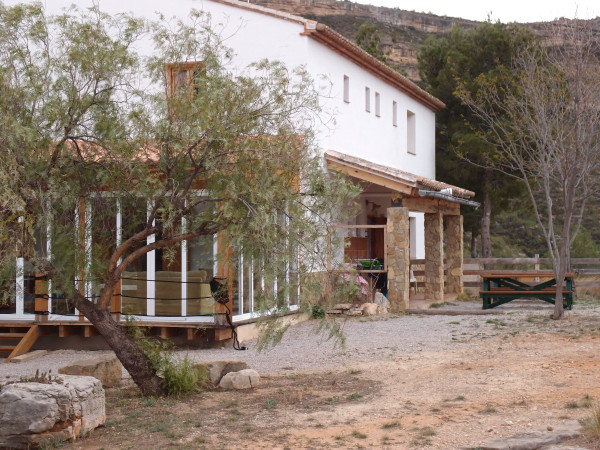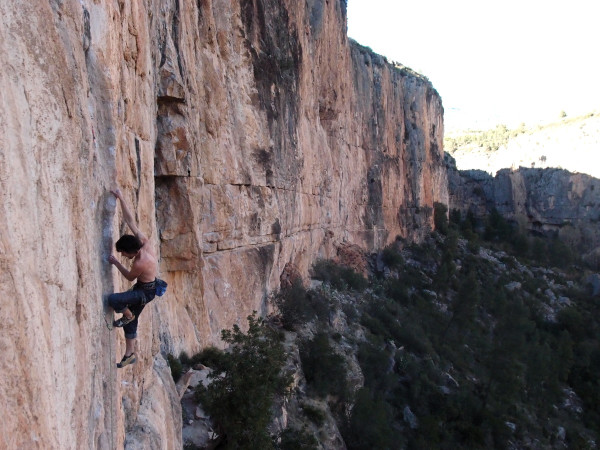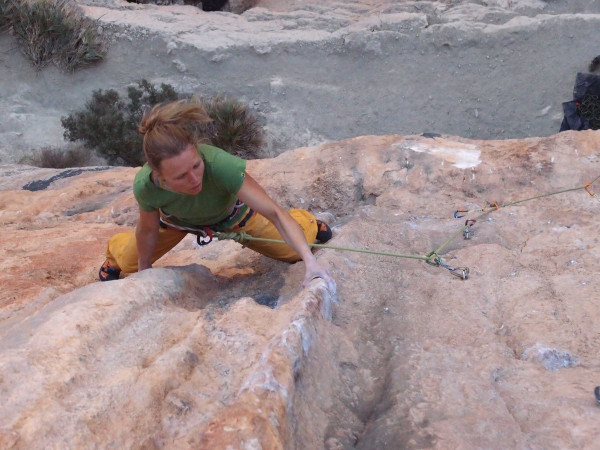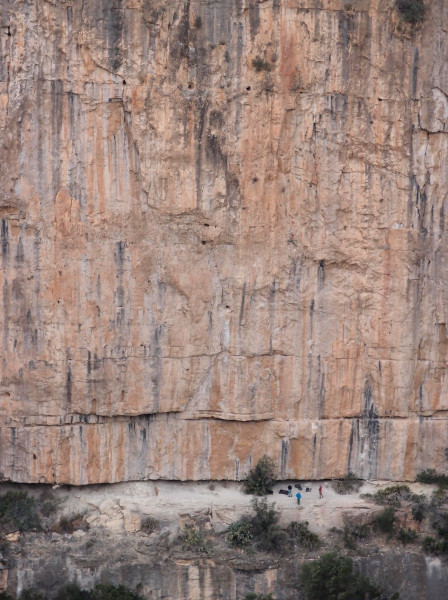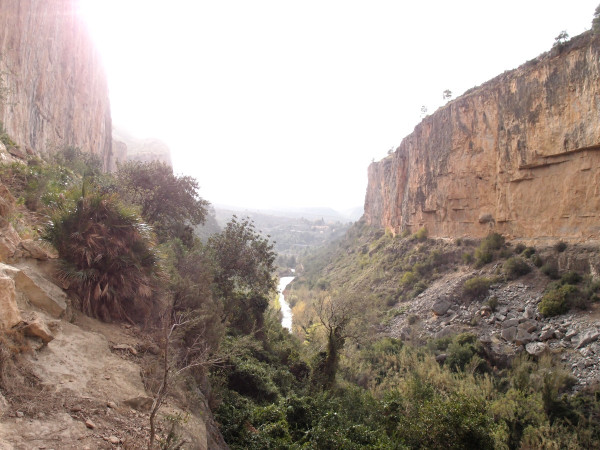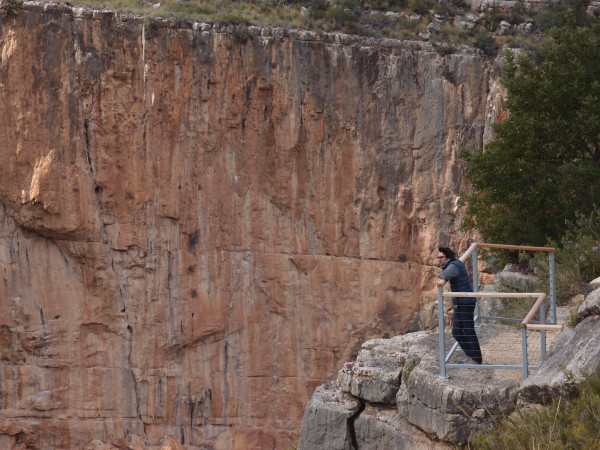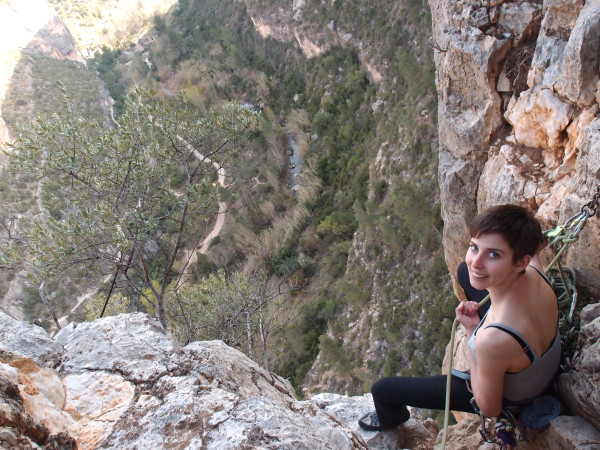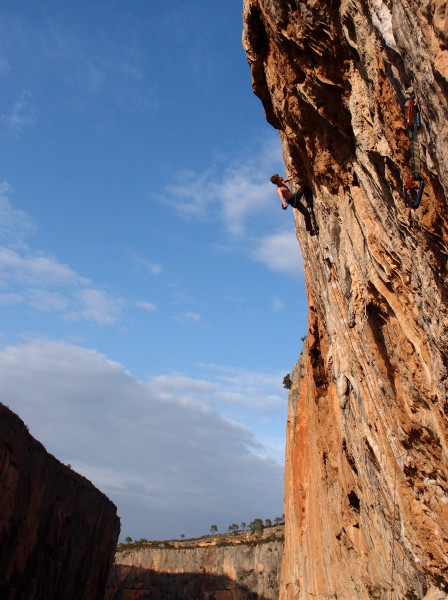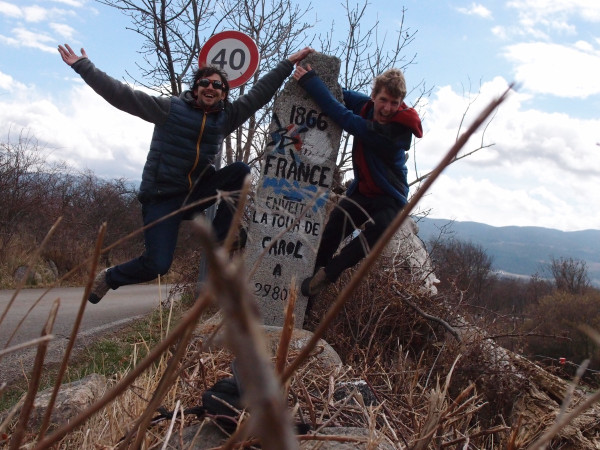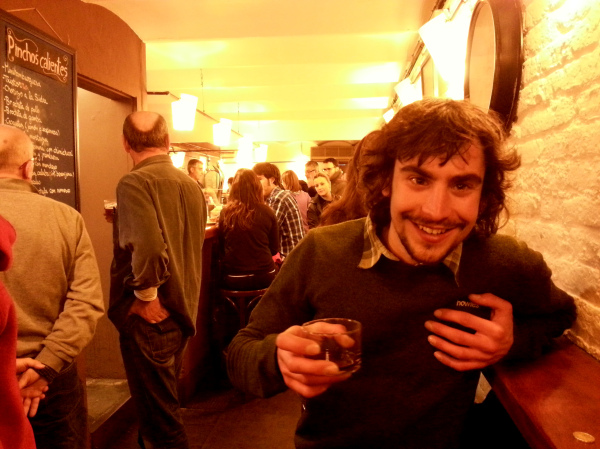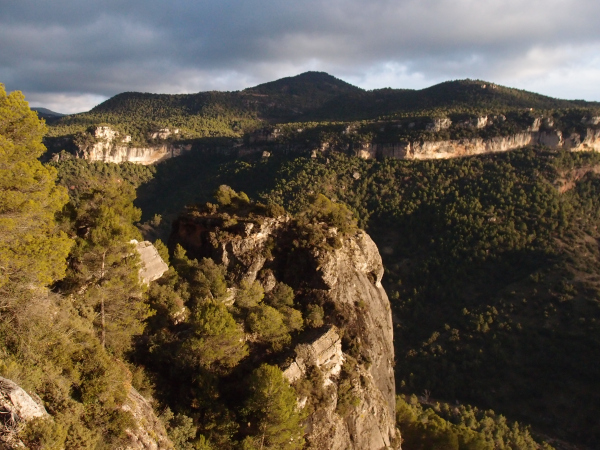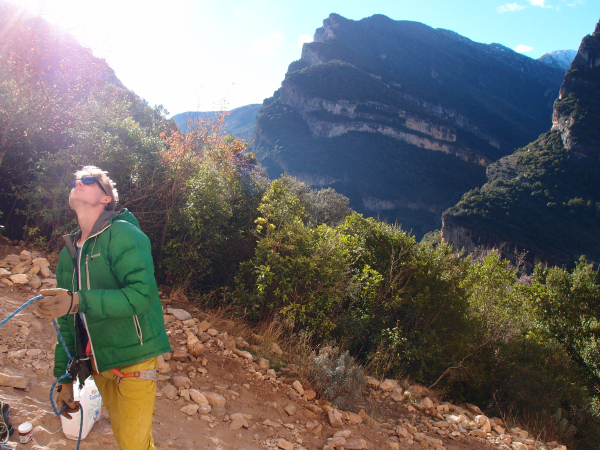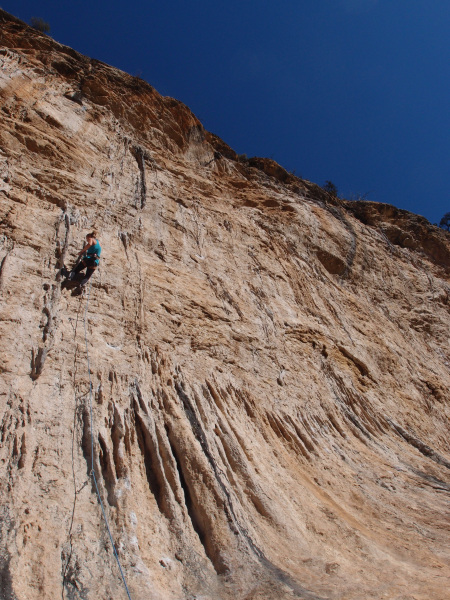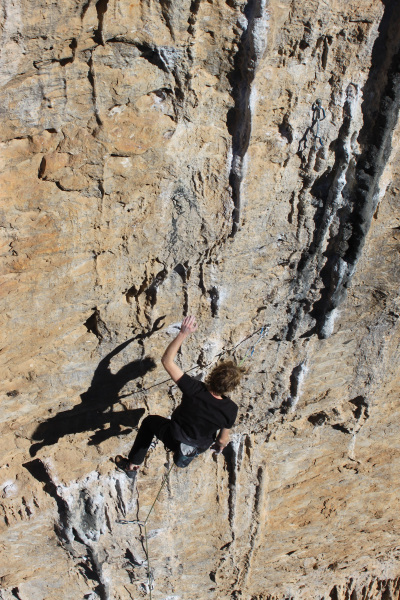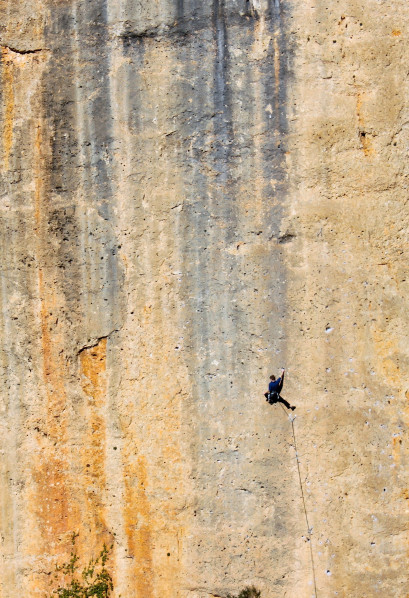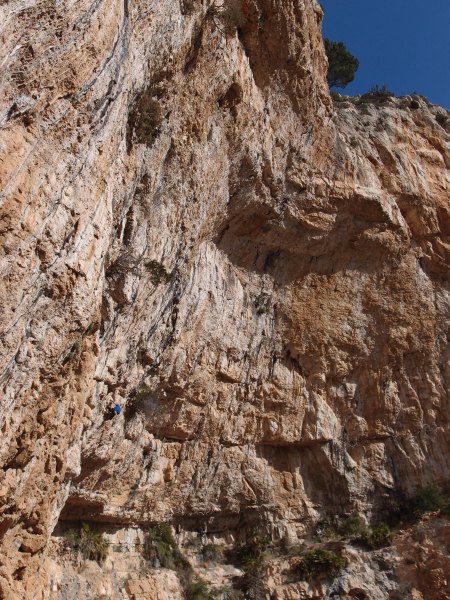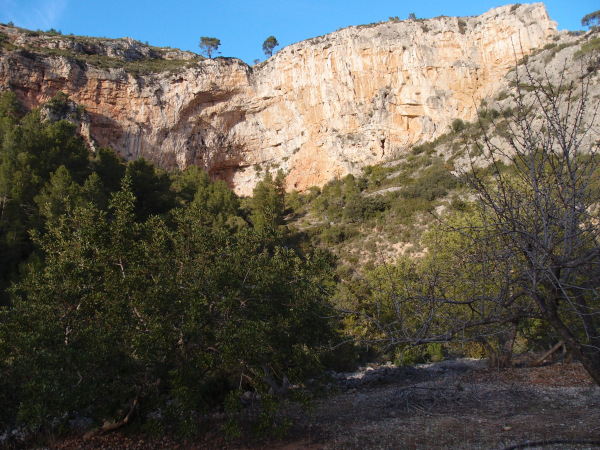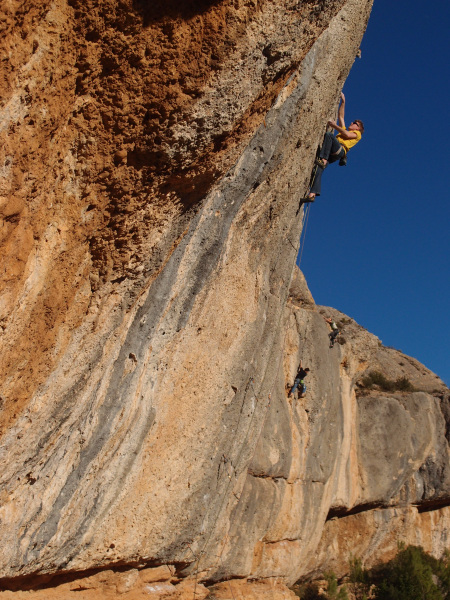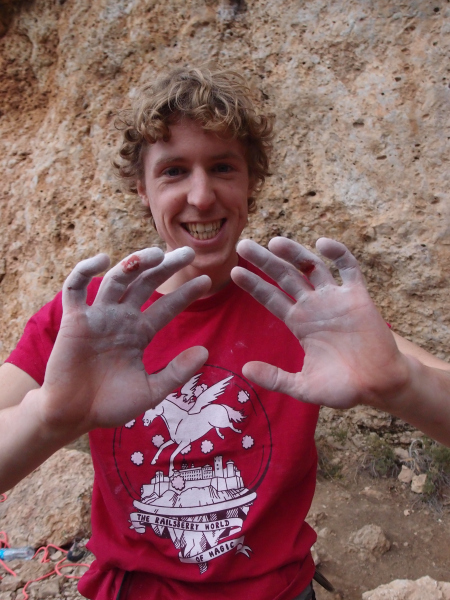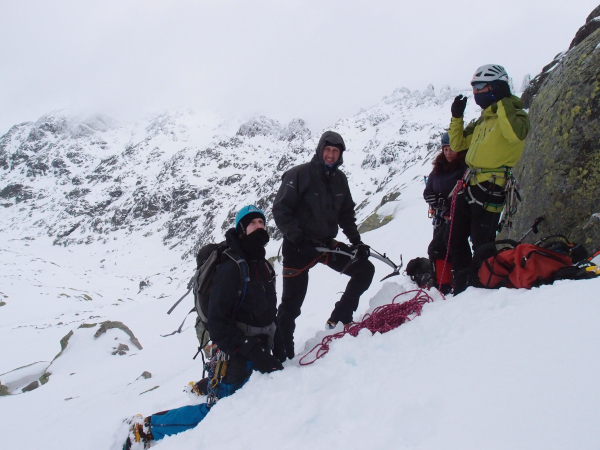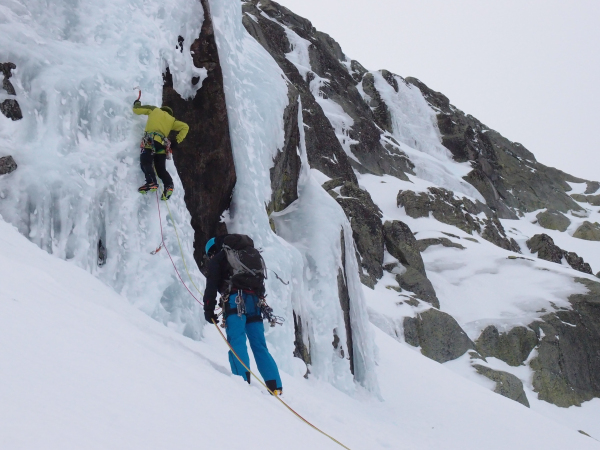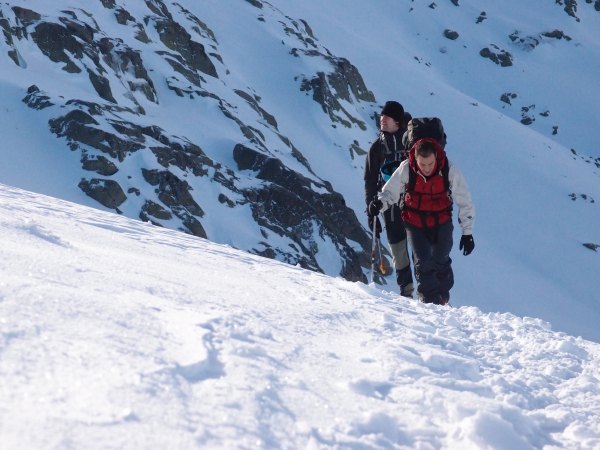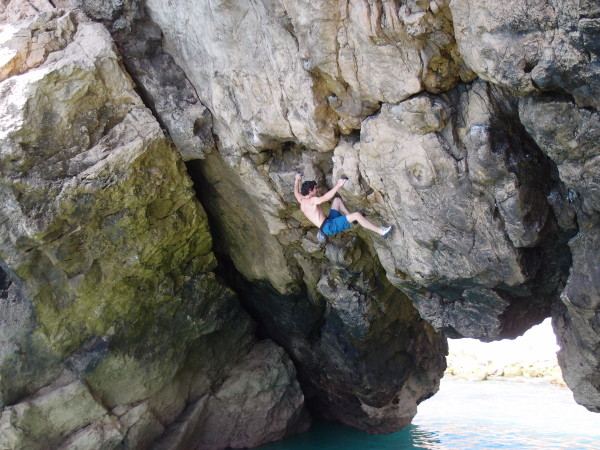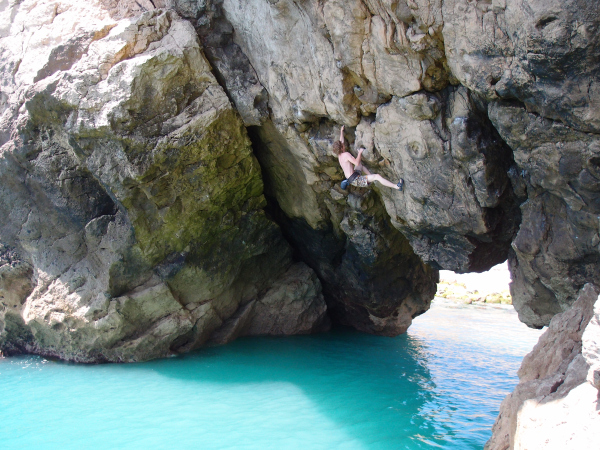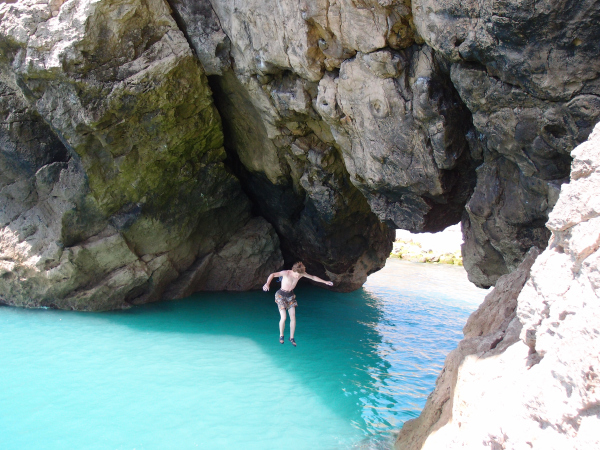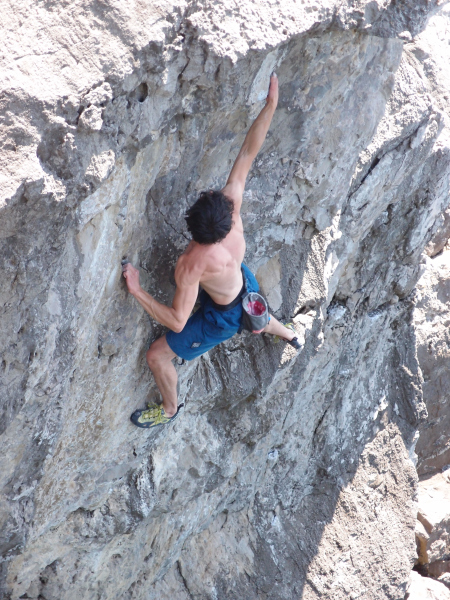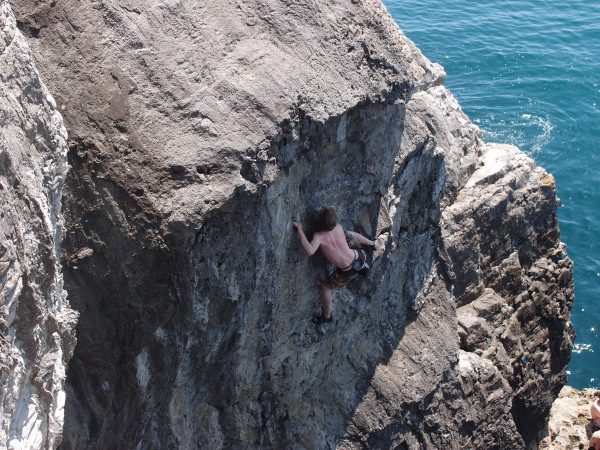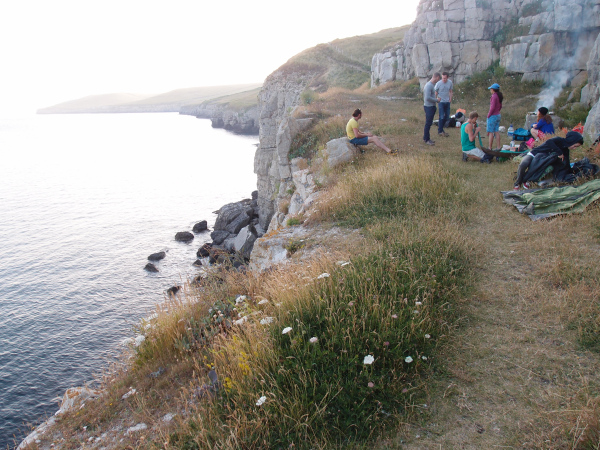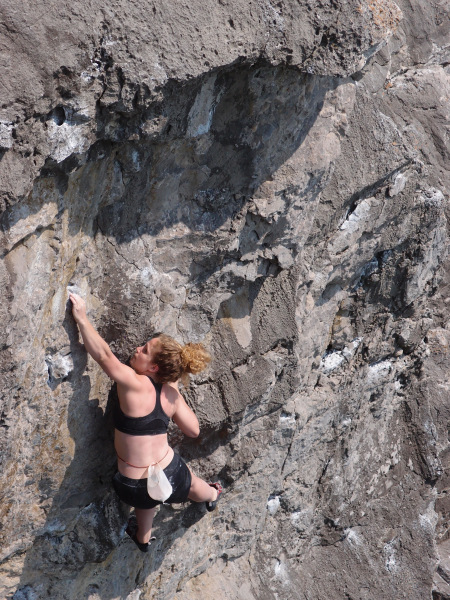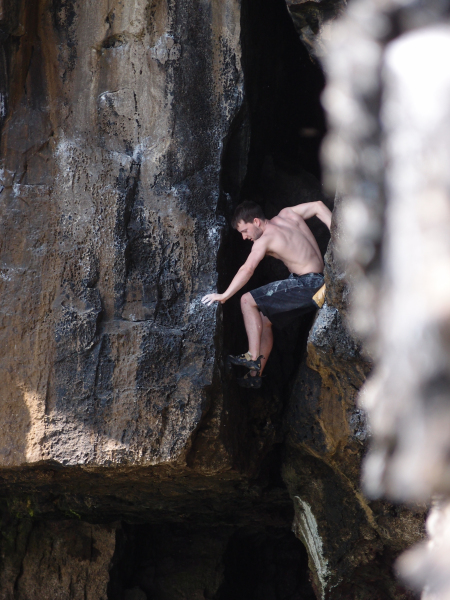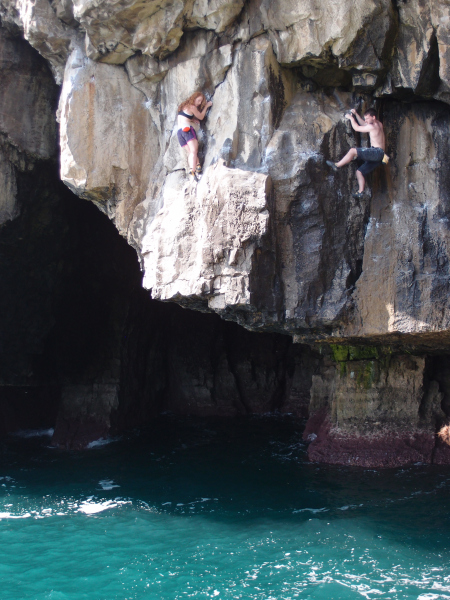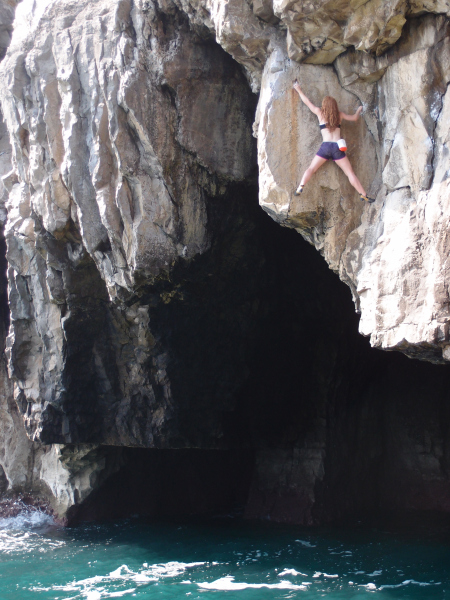Beware that this post contains some beta about routes in Rodellar.
Towards the end of August I embarked upon my biggest climbing trip yet. Actually, that’s not technically correct: I embarked on what was initially supposed to be a “normal” holiday with my girlfriend Emily and some other friends. We planned to stay a week or so in Castelldefels, a beach town near Barcelona.
Some time after booking the holiday, I found out that some friends were going deep water soloing in Mallorca, just a couple of days after I was due to leave Spain. Mallorca is pretty close to Barcelona, isn’t it? It would be rude not to, I thought.
But the Mallorca excursion would only be four days, and if I was going to lose money re-arranging my return travel, I figured I ought to make it count. So I decided that after Mallorca I would head to the sport climbing mecca of Rodellar for 3 weeks.
I use low-carbon forms of transport as much as possible, and so our route to Barcelona involved a late-afternoon Eurostar to Paris, where we had a bite to eat and then boarded the Elipsos “Train Hotel” sleeper train at around 11 PM. The Elipsos is probably the nicest sleeper train I’ve been on, the couchettes have 4 rather than 6 berths, making them comparatively roomy, and the on-board bar-buffet is well stocked and pleasant. They have a proper selection of French and Spanish wines, and the drinks are pretty reasonably priced compared to a lot of trains I’ve been on.
The “holiday” portion of my trip was annoyingly stormy for most of the week. This caused problems when Emily and I decided to do a day trip to Montserrat, with the intention of getting ourselves up an easy multi-pitch route. In fairness the plan was a disaster in a multitude of ways – we left a bit late, got completely lost and nearly ran out of petrol (due to the hire company’s ridiculous “return with an empty tank” policy) all before we even started our approach. After we finally parked up and started walking to the climb, a storm came over and made us very wet.
But we were by this point pretty psyched and hopelessly optimistic, so we carried on. The approach took much longer and was far more adventurous than expected, so when we finally arrived at the base of the climb it was about 6 PM. I looked up at the sopping rock and came to the conclusion that I already knew was inevitable: yes, it really would be a bad idea to start a 3 pitch, soaking wet route with just 2 hours to go before dark. We turned around and walked back, less disappointed than you might think as we had both enjoyed the scramble through the woods together as much as we might have enjoyed actually doing a climb.
When our holiday came to an end, I parted ways with Emily and stayed for a night with a friend who lives in Barcelona. I caught up on some work from his house and boarded a ferry to Palma de Mallorca the following evening.
It’s more expensive to book a cabin on the ferry, and even if I had wanted to, they were all booked up. So my sleep was supposed to be facilitated by the “comfort” of a reclining seat. However after I boarded, I bumped into a couple of other lone travellers on the deck and after sharing some beers we rolled out our mats and sleeping bags on the sun loungers on the deck. The sea air was warm and this was a much more comfortable bed than any reclining seat, except than at around 6 AM it suddenly got very windy which forced a retreat below deck. But the ferry docked at 7 so this didn’t matter much.
I spent the following day working in a cafe, before meeting my climbing buddies at the airport for the drive to Porto Cristo on the other side of the island.
Cova del Diablo is the biggest and best DWS crag in Mallorca, located just outside Porto Cristo. This is where we headed for our first day. I wasn’t very happy with my climbing here, which I put down to a variety of factors. For a start I hadn’t done any climbing during my holiday, and before that I’d had an injured arm which had impeded training. Secondly I’d neglected to cut my toe nails, which made my climbing shoes really painful. But finally I’ll be honest and say that I was scared. Diablo is a pretty big and intimidating crag at 22m high, and I just wasn’t feeling too comfortable with falling off from high up.
The following day was much better. We headed to a different crag called Cala Barques, which is very picturesque. From the parking you walk through some countryside for about 20 minutes and arrive at a beautiful beach. Just along from the beach is an impressive cave with lots of stalactites and other cool features. Further along there are more climbs around some archways in the cliff.
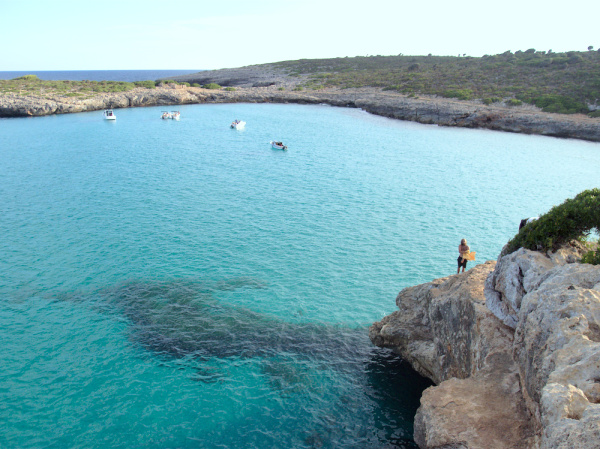
Cala Barques!
I decided to tackle my fear of falling head on, so spent the first hour or two just repeatedly jumping into the water from gradually higher heights. This worked well and meant that I could climb much more comfortably, fully committing to the moves and taking a number of reasonably big falls. I didn’t really get up anything that day, but I tried quite a few routes and felt good about it. The following day I returned and ticked a few things: Big XXL 7a, Tranversal 7a and Bisexual 7a. On the latter I ended up desperately campusing the final moves and pulling through by the skin of my teeth – not the best technique but a crowd pleaser!
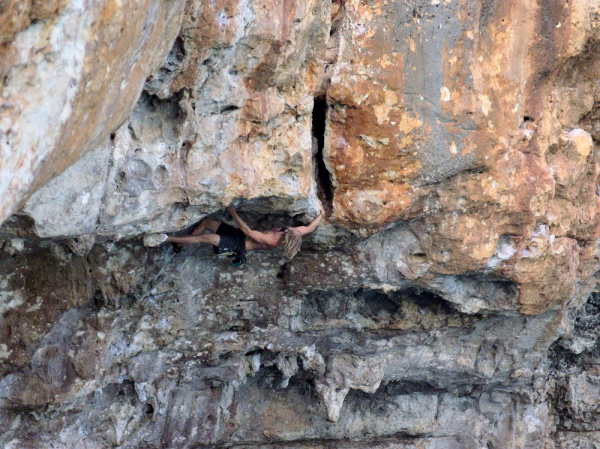
Horizontal moves on Transversal 7a – I met this guy on the ferry
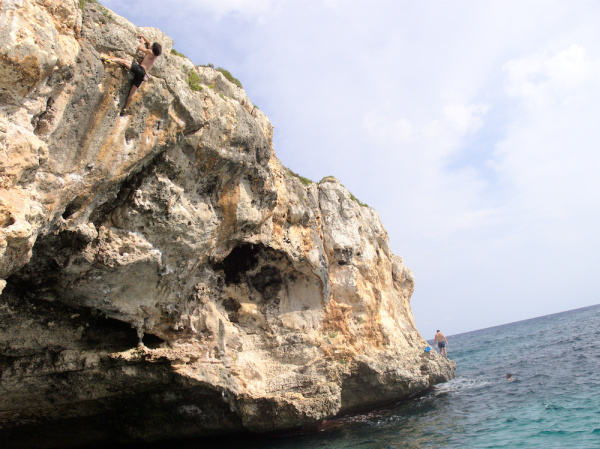
Richard topping out on Metrosexual 7a+
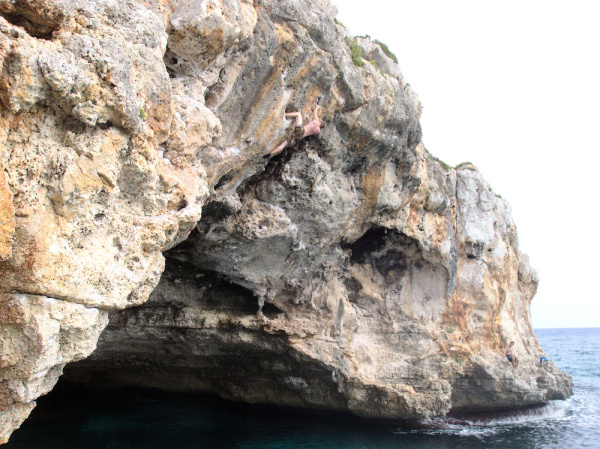
Me on Bisexual 7a
On the fourth and final day it was unfortunately very wet. Undeterred the team decided to head to Cala Barques once more, but really it was very hard to do any useful climbing as the rock was incredibly greasy. I fell off The Might of the Stalactite 7a twice and gave up.
That evening we returned to Palma de Mallorca. My friends got their flights back to the UK and I got back on a ferry to Barcelona. It was a great opportunity to experience the Mallorca DWS that I’d heard so much about, and I would certainly like to return for a longer trip at some point. There are a huge number of brilliant looking lines at Cova del Diablo, so I certainly have more to try there.
Next morning I arrived in Barcelona. I took a high-speed Alvia train to Zaragoza, where I got on a local train to Huesca, which is the nearest train station to Rodellar. The high-speed trains in Spain are some of the best in Europe – roomy and comfortable even in standard (“Turista”) class, and there was even a movie being played (which I couldn’t watch because it was dubbed and subtitled into Spanish).
From Huesca I had decided to try to hitch to Rodellar as a taxi costs about €70. This involved walking through the town, full of regret that I had put so many unnecessary things in my heavy bag. Eventually I got onto the right road exiting the town, and set about trying to thumb a ride.
It wasn’t easy, but I managed eventually. I was almost ready to give up and call a taxi when I managed to get a lift to the village at the start of the long windy road up to Rodellar. From there I figured I’d be waiting some time as there was very little traffic, but not 10 minutes later I was picked up by Doke, a Spanish climber who worked in the kitchen at the climber’s refuge, Kalandraka. I finally arrived in Rodellar around 7 PM, feeling excited and quite relieved that I would be staying in one place for a few weeks!
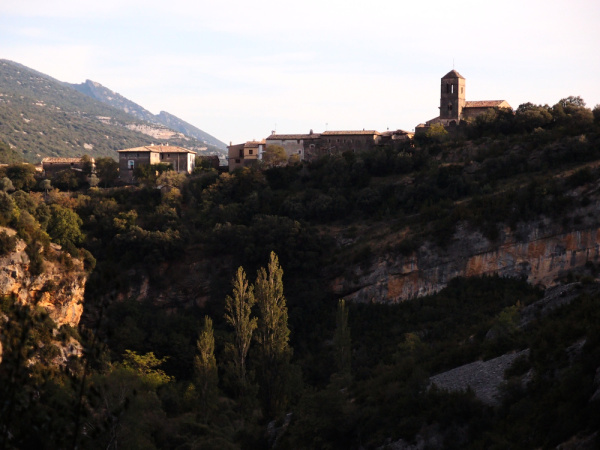
Rodellar!
Initially I stayed at the Mascun campsite, however it quickly became clear to me that the social hub for climbers is Kalandraka. On the first few nights I had the dilemma of whether to stay around Kalandraka to socialise, or go back to the campsite to cook. So after my 3rd night I just moved to Kalandraka, where you can stay in a dormitory for €8.50 per night (which is actually €2 cheaper than the camping).
Kalandraka is a fantastic place. It’s clean, modern and totally geared towards climbers. All the staff are climbers and it just feels like living in a community of like-minded individuals. There’s free internet and electricity, which enabled me to do work on my rest days. For entertainment you have a slackline, pool table and ping-pong. If you want to chill out, there are bean bags on the decking which overlooks the valley. On Wednesdays they serve huge, delicious burgers with bacon, onion, gherkins and a side of salad and roast potatoes, all for €8.50. If you’re still hungry you could try a “slice” of cake, literally the biggest slices I’ve ever seen. You don’t have to buy meals of course – there’s a communal kitchen for guests to cook in too (but note that you need to bring your own stove).
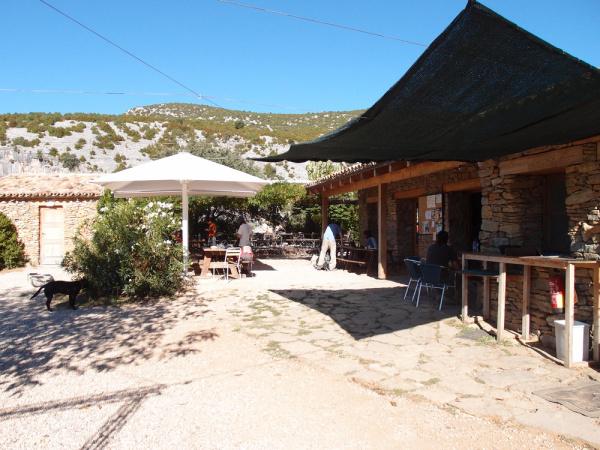
Kalandraka!
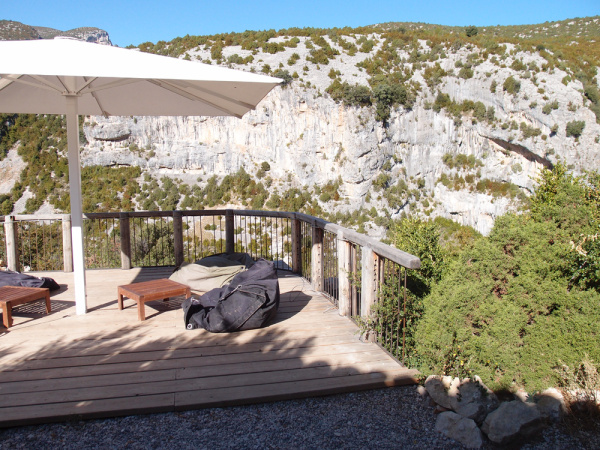
The deck at Kalandraka, a lovely place to chill out
The climbing area is also very pleasant. It sometimes seems like a giant edible garden – there’s rosemary, thyme and blackberries everywhere. If you keep your eyes open you can also find figs, grapes, mint, oregano, lemon-grass and lavender.
The weather was extremely good right until the end of my stay, with basically every day being clear and sunny. In September it’s too hot to climb in direct sunlight, but there are crags on both sides of the valley so it’s typical to start on the east side and then cross the river later in the day. In the evening it does get cold, which made a welcome change from the perpetual heat of Barcelona and Mallorca.
Groceries can be purchased from the shop at the Mascun campsite, but it’s quite expensive so if you get to Barbastro or Huesca it’s worth stocking up. The shop is perfectly adequate though (if a little lacking in fresh produce), so you certainly won’t go hungry if you can’t or don’t want to leave Rodellar.
At the start I was shown around by Jerome Mowat, who I knew from London and who happened to be in Rodellar at the same time as me. This was a great way to quickly get an understanding of the place, and my initial goal was to try to climb lots of routes and get fitter.
On my first day I did my first 7a onsight, the 38 metre long epic Fanthkes o panthere. This felt like an achievement at the time, but by the end of the trip I had done so many 7a and 7a+ onsights that I came to take them for granted. I think onsighting this grade in Rodellar is definitely easier for me than in the UK as everything is chalked up and there is often no real crux on a route. So if you have enough stamina and can keep it together you’re set.
After the first two days warm-up and a rest day I started on my first project. I was climbing with a guy from Dorset called Trev, and he was trying a 7b+ called Aquest any sí (Catalan for “this year yes”) at the crag with the same name. (A very nice place right next to the river, which gets shade from about 11 AM.) So I had a go and I’m glad I did because it’s a sustained 25m of brilliant climbing with the crux right at the top (powerful moves while pumped – yay!) It took me 3 sessions to tick the route but it was so good that I almost didn’t mind that I kept falling.
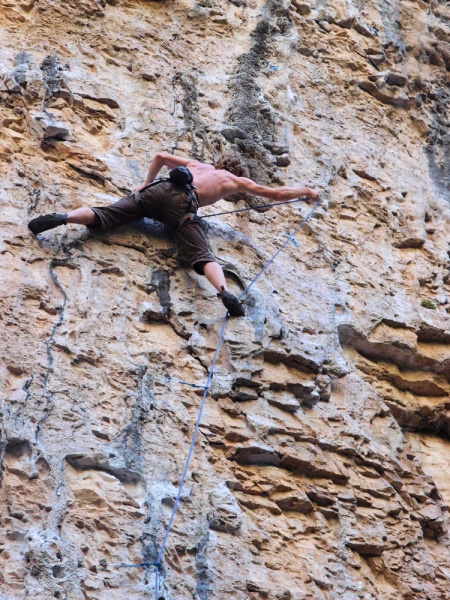
Aquest any sí 7b+
However the real goal I had in mind for my trip was to get my first 7c, so I turned my attention to this next. I’d heard that Nanuk in the Gran Boveda (“Great Vault”) was a worthwhile line so set about working on it.
The first attempt came at the end of two days of climbing and didn’t go well. I was shattered and didn’t even make it to the chain. I sacked it in and decided to come back on a different day for a better attempt.
Nanuk has everything: you start off with some slab climbing and come to a ledge where you can rest (but if you’re pumped here then you’re doing it wrong). You then chimney up between some massive tufas, get set and blast through some pumpy moves up an overhanging section to a small cave where you can get a good knee-bar rest. Try to recover as much as possible because the next few moves are difficult and bouldery, involving a reachy pop to a sloper over the lip of the roof, followed by some powerful moves to pull up and over to reach a tufa jug where you finally clip the chain – epic!
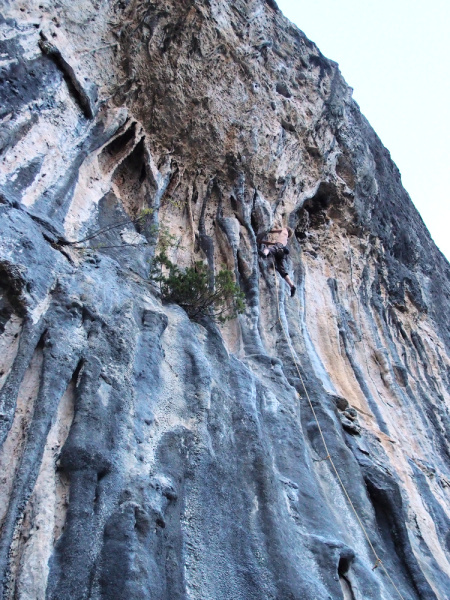
Nanuk 7c
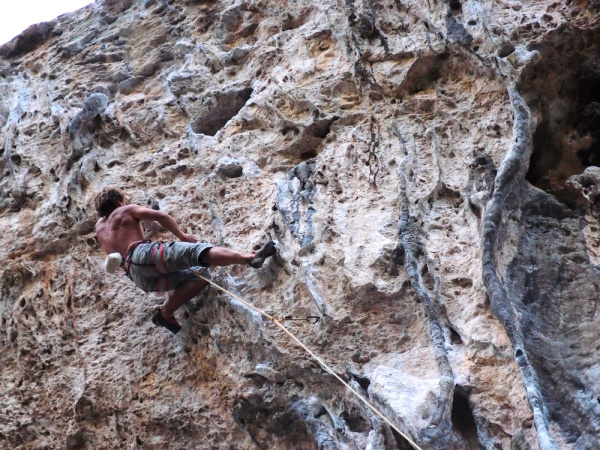
Trev on the steep part of Nanuk
On my first proper day working it I managed to get to the finishing moves, but I was absolutely spent and had no chance of succeeding on the boulder problem. I knew I needed to get the climbing up to there as efficient as possible, so on my next day I went bolt to bolt really trying to work out as much beta as possible.
It paid off. On the following attempt I reached the cave knee bar and felt relatively fresh. As I hung around shaking out I knew I could get it on this attempt if I just kept myself together and stayed in control. The first couple of moves after the rest felt like a struggle but I managed to regain composure and stick the sloper. I battled over the lip and finally clipped the chain with relief and elation – I’d got what I came for! Beers were drunk that night.
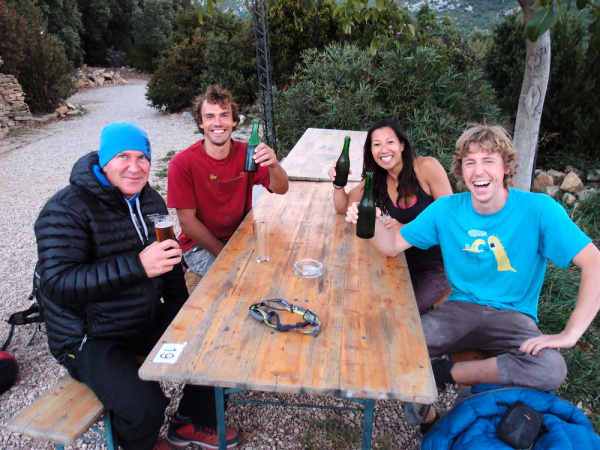
Happy faces
So, what next? Well I was chatting to Doke (the guy who picked me up when hitching) one day and he pointed out a new route at El Vaso, called Tope Gama. As we talked a bit more he told me that he’d bolted it himself. It was 7c he said, but a hard one. Some say 7c+. I really liked the personal connection with this route, so was keen to have a go, but after several attempts I gave up. I could do all the moves but I found myself a long way from being able to actually climb it – the route takes a very overhanging line up the roof, featuring big moves between decent holds. I found myself getting completely pumped after just a few moves, and while I could envisage doing it with enough training, it didn’t feel like a realistic prospect for this trip. It definitely felt a lot harder than Nanuk.
The next day I found myself trying something a bit easier, Pince sans rire 7b+ (French for “pinch without laughter”, meaning a dry humour) at the crag with the same name. This is an absolutely inspiring line – after some easy climbing through the first few clips you get sustained, slightly overhanging tufa climbing for the rest of its 30m length, with one good rest about two thirds of the way up.
On my first try it felt hard but doable, and I was keen to redpoint it for two reasons: one was that it was just such a good, long line, and the other was that it required efficient tufa climbing, something that I don’t have a lot of experience of from climbing in the UK. I do like to work on my weaknesses so this was an attraction for me.
After a rest day I came back to the crag with American climber Chris Jorde who had recently arrived in Rodellar. We found the line quite busy and despite my British qualities I didn’t fancy queueing, so I did some other climbs meanwhile. Which is actually a good thing because I decided to try the climb to the left, María Ponte el Arnés 7b+, and was super happy when I managed to get the onsight! The general opinion seems to be that it’s on the easy end of 7b+, but even so it’s a great achievement for me. The route has better rests and is less sustained than Pince sans rire, but with some harder moves, and I definitely think it’s equally good.
Later that day I tried the very long and enjoyable Far Faders West 7a+, but fell off at the top. Finally Pince sans rire became free, so I hopped on and managed to tick it. A great day all round.
Having put Pince sans rire to rest, I was keen to try another 7c. There were two at Gran Boveda which looked interesting. The first was Maroskum, which started off nicely enough, but was incredibly thin, crimpy and hard at the top, featuring what appeared to be a decidedly manufactured two finger pocket. I nearly failed to even reach the top and was ready to leave a “bail biner” on the bolt, but some encouragement from my belayer Nico finally got me to the chain. I stripped it.
The second route I tried went much better. In fading light I hauled myself up L’any que ve tambe (Catalan for “next year also”, the companion to Aquest any sí) with many rests on the rope. I felt tired and drained, but it was evident to me that this was a fantastic route, featuring mainly tufa climbing but with a more vertical bouldery section at the top.
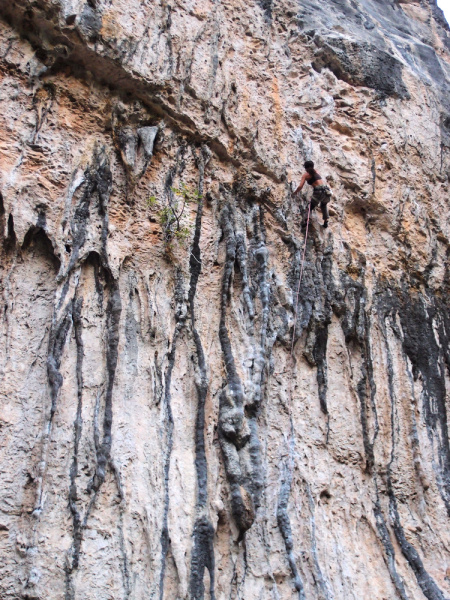
Unknown climber on L’any que ve tambe 7c
After my rest day I returned with Chris, but in the morning we warmed up at La Palomera which is worth a brief digression…
I planned to get on a 7a called O3. When we arrived some French guys were climbing it so we did another route first. We then got ready for O3 and asked the French guys which line it was, from which we understood that it was the right hand line of bolts. I’d looked at the guidebook and seen that there were 7 bolts, so I put 8 draws on my harness and off I went. After I clipped the first Chris looked up at the soaring line and expressed doubt that 8 draws would be enough. He had a point: we could count 6 bolts from the ground and that got us halfway up the wall, which would be an odd place to put the lower-off.
So Chris got me some more draws and I carried on. After some fantastic technical face climbing I reached a jug beneath a small roof. I peeked up and could see 2 bolts. I couldn’t see the lower-off. I looked at my harness and could see 1 remaining draw, despite the extras that Chris persuaded me to take. Oops.
I wasn’t sure if the lower-off had an in-situ clip, and not wanting to compromise my onsight attempt I decided I had no choice but to run it out. After some hesitation I committed to the move, pulling over the lip of the roof, and very gingerly climbing past one bolt, then another and finally arriving at the chain feeling relieved – I would have been in for at least a 10 metre whipper! Fortunately the climbing after the roof was not too difficult, so it was mainly a head game.
Back on the ground, we realised that the climb was in fact Cárcel racional, the route just right on O3. The guidebook grade is an absurd 7b/+, but both Chris and I agreed that we wouldn’t give it more than 7a. So despite the drama this was a happy accident – we wouldn’t have picked a 7b/+ as a warm-up, but we both found it to be a superb route and were glad to have accidentally climbed it. For what it’s worth, it does seem like a lot of the lines at La Palomera are over-graded.
So after this adventure we headed to the Gran Boveda, and I was pleased to get L’any que ve tambe on my 2nd attempt of the day (3rd total). Chris did a fast redpoint of Les Cadres Regenerent 8a, and then flashed L’any que ve tambe.
As we pondered what to do the following day, Chris suggested that we could head to a crag called La Piscineta. La Piscineta is not a popular crag for two reasons: the climbs are quite hard, and compared to most of the crags in Rodellar it’s a long way from the town, involving an hour’s hike up out of the Mascun valley and down into the Alcanadre valley (so you have a hill to climb in both directions).
But if you can climb hard enough and are willing to endure the walk in, you will be rewarded. I felt like I’d done everything I wanted to do for the trip, so I was up for the adventure even though there was only one route that I’d realistically be able to try there. I was curious to see the crag I’d heard people say was so amazing, and keen to just get out to somewhere a bit new and different after becoming quite familiar with the Mascun valley in the preceding 3 weeks.
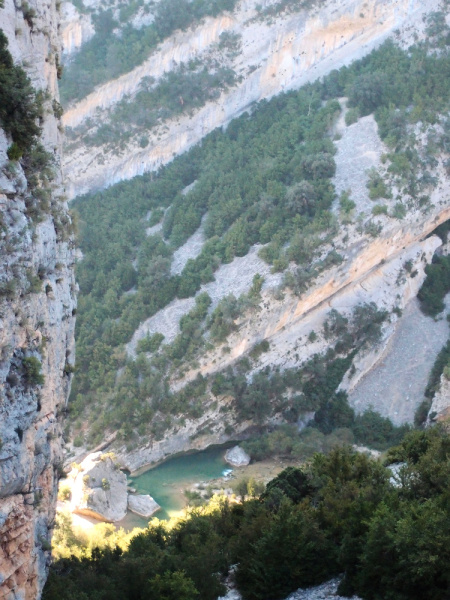
Dropping down into the Alcanadre valley
La Piscineta did not disappoint. We waded across the river and probably the best looking crag I’ve ever seen came into view. At its base was an immaculate turquoise pool with fish lazily swimming around, occasionally nibbling at the surface or chasing each other. Out of the river rose a gigantic 45 metre roof of tufas and jugs. Across the valley there must have been at least 20 huge eagles gliding in circles around the rocky peak. We both got extremely psyched.
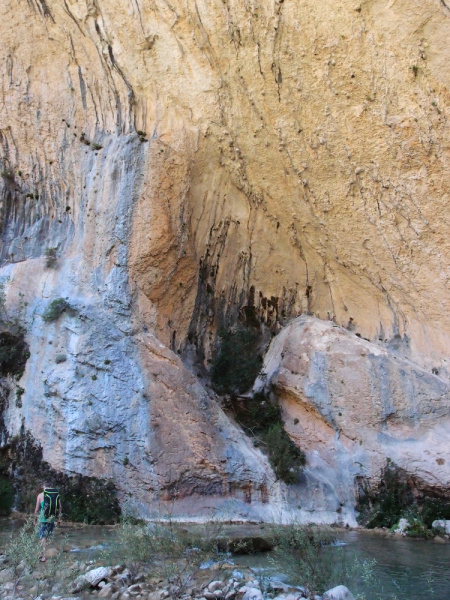
Chris crossing the river towards the steepness of La Piscineta!
Climbing wise the day was not a great success, but neither of us minded. We hadn’t come here just to collect yet another tick. Chris tried Pieds nus dans la terre sacrée 8a (“Barefoot in the holy land”) and I tried Pim pam plouf 7b+. On my second attempt I got through the crux into a knee-bar, but when I came to re-adjust my foothold broke and ejected me. On the next attempt I came within two clips from the chain but completely ran out of juice. Chris made 4 attempts on his route but was similarly burned out by the last. We packed up our gear and had an invigoratingly icy dip in the pool before starting the hike back.
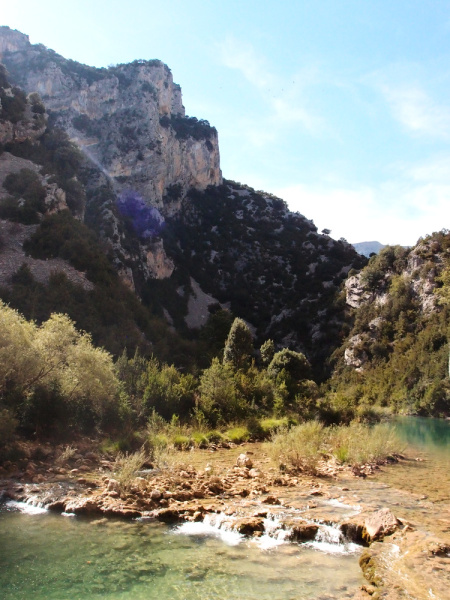
Eagles circling in the distance
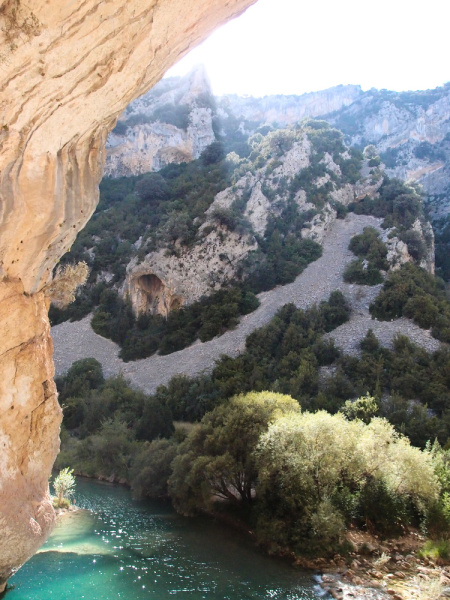
Inviting water beneath the crag
La Piscineta is definitely somewhere I would like to return – the day really motivated me to get stronger and come back at some future point when I can try more of the routes there!
And so after a few more days my trip drew to a close. It was the first time I had been on a climbing trip on my own which I was somewhat apprehensive about beforehand. But it definitely worked out thanks to the social scene at Kalandraka and the fact that most of the climbing in Rodellar is contained within a relatively small area. I met and climbed with lots of amazing people from all over the world. I did have to be a bit more self-sufficient and proactive than I might have been if I hadn’t come alone, but all in all it worked out for me.
My plan for the return journey was a bit different to the outbound journey. On reflection I didn’t think the train was the best way to get to Rodellar from Barcelona. It turns out there is a coach service which runs from Barcelona Sants station to Barbastro, which is a bit closer than Huesca and doesn’t involve the change at Zaragoza. (It can also be a bit cheaper.)
So I intended to get the bus back from Barbastro to Barcelona. When I was booking my travel the Elipsos night train from Barcelona to Paris was unfortunately not yet on sale, and I wanted to get my travel sorted so I opted to book a night train from the French border town of Cerbère. This meant that I’d need to take a regional train from Barcelona to meet the night train.
However, as luck would have it, a Polish couple I’d made friends with, Agnies and Wojciech, were driving to Girona Airport that day, and my regional train stopped at a station very close by. So I was fortunately able to skip out the faff of going to Barbastro and Barcelona.
When I got to Cerbère I had a couple of hours to wait, so I sat reading a book. At some point I noticed a man nonchalantly wander over and sit beside me, but didn’t take any notice as I was engrossed. Then he made an offhand comment which I don’t remember, so I turned to look at him and realised it was my friend Danny from back in the UK! I nearly jumped out of my skin! Danny was returning with his partner Jess from their holiday in Sitges, so it was great to have some unexpected company that night and the following morning. These sorts of experiences (with strangers or otherwise) are one of the reasons that I love train travel.
So that’s it. I’m now back in London wondering where the next trip will take me and who I will meet. Certainly I will return to Rodellar at some point, perhaps the same time next year!
